- Travel Planning Guide

A Travel Price Comparison for Japan Nagoya vs. Kyoto for Attractions, Food, Families, and Couples

- Pros & Cons
- Attractions
- Backpackers
- Public Transit
- Walkability
- More time in Nagoya or Kyoto?
- Which is Cheaper, Nagoya or Kyoto? (Travel Cost Comparison)
Which is Bigger, Nagoya or Kyoto?
- When to Visit Nagoya or Kyoto?
Should you visit Nagoya or Kyoto?
Which is cheaper to visit which is more expensive for vacation.
Should I visit Nagoya or Kyoto? This is a common question asked by many travelers. By figuring out which city has activities that align with your interests along with knowing which is more affordable, you'll understand where you can get more bang for your buck. So, let's dive into the details and the data, which all comes from actual travelers.
Nagoya is a under-rated, often overlooked, and under-the-radar city. Travelers will also find plenty of sights and attractions here, as it's a big city that attracts lots of visitors. And you can't forget about the shopping, museums, and nightlife.
Kyoto is a cultural, fascinating, and traditional city. Because this is such a big city, visitors will find many sights and attractions around town. It's considered by many to be an absolutely beautiful destination, too. It's also popular because of the food, shopping, and museums.
Nagoya and Kyoto: Pros and Cons
- Popular museums and historical sights
- Active nightlife
- Family-friendly
- Good for backpackers and budget travelers
- Big city activities
- Less popular with couples
- Scenic old town
- Good for couples and romance
- Impressive beauty
Is there more to do in Nagoya or Kyoto?
Travelers will generally find more things to do in Kyoto than Nagoya. While Nagoya is larger than Kyoto, Kyoto has more sights and attractions for tourists. Kyoto is more popular for its museums, historical sights, and impressive beauty, while Nagoya is known for its food, nightlife, and big city activities. Kyoto is more touristy than Nagoya and is popular for its Buddhist temples, cultural activities, and rich history. It is also home to Kinkaku-ji. Nagoya is popular for its local cuisine, historic shrines, and long running shipping industry.
How is Nagoya different from Kyoto?
Which is better for a holiday.
Let's take a look at the differences and similarities between Kyoto and Nagoya. Then, you can decide for yourself which place is better for your next trip.
Are the Museums and Historical Sights Better in Nagoya or Kyoto?
Kyoto is very popular for its museums and history. Also, Nagoya is not quite as popular, but is fairly good for its museums and landmarks.
With plenty of landmarks, attractions, and museums, Kyoto has many famous sights for visitors. With its long-running history, there are many traditional buildings and temples in town. Nijo Castle is stunning to explore, but also make sure you visit the Fushimi-Inari Taisha Shrine, the Golden Pavilion, and Kiyomizu-dera Temple.
Many visitors head to Nagoya specifically to visit some of its top-rated museums and other sights. There are shrines, temples, and other interesting sights in the city. Atsuta Jingu is an important Shinto shrine. Nagoya Castle is another interesting place to visit. If you're willing to head out of the city center a bit, the Meiji-mura Village Museum is an open air museum that has interesting Japanese architecture. There are also interesting museums in town such as the Nagoya City Art Museums and the Toyota Techno and Toyota Automobile Museums.
Is the Food Better in Nagoya or Kyoto? Which Destination has the Best Restaurants?
Nagoya is renowned for its restaurant scene. Also, Kyoto is still popular, but not quite as popular for its local flavors and cuisine.
Many restaurants in Nagoya have been singled out for their culinary prowess. The city has a strong food culture that's referred to as Nagoya meshi. It's a popular destination for foodies to Japan, even though the city itself is often overlooked by tourists. The city's food uses a lot of local vegetables and its influenced by several international flavors. Important ingredients in the dishes include unagi (freshwater eel), Nagoya cochin (chicken), tamari (soy sauce), and mame miso.
Kyoto has a number of nationally recognized food spots and restaurants. The local cuisine is as beautiful as it is delicious. There is a long running history to many of the dishes, and the recipes are expertly prepared by world class chefs at many of the restaurants. You can enjoy everything from a tea ceremony to multi-course meals, referred to as kyo kaiseki.
Is Nagoya or Kyoto Better for Nightlife?
Nagoya is a great destination for nightlife and partying. Also, Kyoto is still popular, but not quite as popular for its evening party scene.
The people in Nagoya know how to have a good time. There are many bars around town, many of which have an international theme. Later in the evening, many people head out to a nightclubs, most of which are concentrated in either Sakae and Shin-sakae.
If you're looking for night time activities Kyoto has a few options to choose from. While it isn't known for its wild nightlife scene, there is a relaxed and active energy in the evenings here. You can visit the beautiful Arashiyama Kimono Forest or explore some of the riverfront areas such as Kamo Riverside.
Is Nagoya or Kyoto Better for its Old Town?
Kyoto is very popular for its historic old town charm. However, Nagoya does not have a historic old town.
Kyoto has a world-famous historical area. This is among the most historic cities in Japan and there are many traditional buildings and temples. Higashiyama is filled with interesting districts and it has many UNESCO World Heritage temples.
Nagoya does not have a historic old town.
Is the Shopping Better in Nagoya or Kyoto?
Shoppers can find a variety of excellent stores in both Nagoya and Kyoto.
Many visitors explore the shopping areas in Nagoya. You'll find everything from large shopping malls to street markets and local vendors. Many people head to Nagoya Station for shopping, but Osu Shotengai is another interesting shopping area in the city's old town.
Kyoto is an extremely popular place for shoppers. There's a mix of modern shopping venues and traditional boutiques. Shijo Street is a popular shopping area, as is the area around JR Kyoto Station.
Is Nagoya or Kyoto Better for Families?
Nagoya is renowned for its family-friendly activities. Also, Kyoto is still popular, but not quite as popular for its kid-friendly activities.
Nagoya is an extremely popular city to visit for families. There are a large number of attractions for families in the area. This city is where you'll find Legoland Japan, which is one of the most popular activities to do with kids. The city also has the Sea Life Aquarium, which is located in the Legoland Hotel. Next to Legoland you'll find the SCMaglev and Railway Park. Another great activity is a visit to the Nagoya Public Aquarium, which is one of the biggest aquariums in Japan. There are dolphins, orcas, and many different ecosystems to explore. Nearby is the Sea Train Land amusement park.
You'll find plenty of family-friendly things to do in Kyoto. Kids will enjoy exploring Nijo Castle as much as adults. If the weather isn't great, you can head to the Kyoto International Manga Museum which is a bit like a library and is perfect for Manga fans. There are also markets to explore such as the Nishiki Markets, which are lined with shops and restaurants.
Is Nagoya or Kyoto Better for Couples?
Kyoto is very popular for couples. Also, Nagoya is not quite as popular, but is fairly good for romance.
Kyoto makes for a terrific place to visit as a couple. This is one of the most historic cities in Japan, and it has many romantic neighborhoods where you can enjoy the atmosphere. Visit Sanneizaka Slope for its traditional shops and restaurants or take a ride on the Sagano Romantic Train. Other romantic highlights include Kimono Forest, which is an art exhibit, and Suzumushidera Temple.
Nagoya is a nice destination for couples. Couples will enjoy visiting the Nagoya Castle or checking out the dolphin and orca shows at the Nagoya Public Aquarium. Noritake Garden is a nice place to explore. There are also many coffee shops in town as well as museums and temples.
Is Nagoya or Kyoto Better for Backpackers and Budget Travelers?
Kyoto is a very popular place for backpackers and budget travelers. Also, Nagoya is not quite as popular, but is fairly good for backpackers.
Plenty of budget travelers and backpackers visit Kyoto. It's a popular destination in Japan and there are plenty of hostels and free activities that backpackers can enjoy.
Nagoya is popular with backpackers and budget travelers. Although the city is often overlooked by tourists, there are a limited number of hostels in town, so they fill up quickly. You should make reservations well in advance if budget is a priority.
Is Nagoya or Kyoto Better for Students?
Kyoto is a very popular place for its student-friendly activities. Also, Nagoya is not quite as popular, but is fairly good for students.
Kyoto is a very popular city for students and younger travelers. It's a great student city with world class universities and a large student population.
Nagoya is popular with students. Nagoya University has been working to grow its international population. This is a fun and dynamic city that makes a great place to study.
Is Nagoya or Kyoto Better for Public Transit? Which Is Easier to Get Around Without a Car?
Visitors will find excellent public transit in both Nagoya and Kyoto.
Many visitors use the public transit system in Nagoya. The city has both a subway and public buses. The main bus stations are at Nagoya Station and Sakae Station and there are six subway lines throughout the city.
Public transit in Kyoto is fairly effecient and thorough. The city has an extensive system of trains, subways, and buses that make it easy to get around.
Is Nagoya or Kyoto a more walkable city?
Kyoto is very popular for its ease of walking around. Also, Nagoya is not quite as popular, but is fairly good for its walkability.
It's very easy to get around on foot in Kyoto. It's one of the most walkable cities in Japan and there are many sidewalks and pedestrian-friendly areas.
Nagoya is very walkable. The downtown area, where you'll find many of the sights, is walkable. The distances vary, but many sights can be reached on foot.
For even more information, also check out Is Nagoya Worth Visiting? and Is Kyoto Worth Visiting? .
Should I spend more time in Kyoto or Nagoya?
How long in nagoya or kyoto.
Visitors can find plenty of fun things to do in both Nagoya and Kyoto. In our opinion, Kyoto has more to see and do, so we recommend spending more time in Kyoto than Nagoya . However, 2-3 days is a good amount of time to spend in either destination.
Families should spend more time in Nagoya than Kyoto. Because of the many family-friendly attractions and fun things to do for kids in Nagoya, it's a great place to visit with the whole family.
Couples should spend more time in Kyoto than Nagoya. You'll find plenty of romantic sights and fun activities in Kyoto that are perfect for a weekend getaway or a longer couple's trip.
Backpackers and budget travelers should spend more time in Kyoto than Nagoya if your budget allows for it. With a larger number of budget-friendly sights, good nightlife, and active things to do, anyone traveling on a budget would have a good time in Kyoto.
- How many days in Nagoya or Kyoto? Ideal Length of Stay Nagoya 2-3 Kyoto 2-3
One day in Nagoya or Kyoto?
Each neighborhood in Nagoya has its own distinct appeal, so there are pleny of areas to explore. Lots of people come for the food. This city offers a variety of activities to choose from. Since there is so much to do in the area, one day is probably not enough for all of it.
Many travelers enjoy the museums and nightlife when visiting the destination of Kyoto. The old town is one of the main draws for visitors. But since there are so many activities, you'll likely want to spend more than one day exploring.
A weekend in Nagoya or Kyoto?
It's hard to know how much time to spend in Nagoya. For many, it makes a great getaway for a weekend. This would be the perfect place to spend a weekend, as it has just the right amount of activities. The length of your ideal trip is an individual decision.
Kyoto is a great place to explore. It is common to spend a weekend here. Don't miss the museums, as that's what most people do. With all of its activities, you can easily fill a weekend here. Your budget might influence how long you stay.
Five days in Nagoya or Kyoto?
Nagoya is a fun place to experience. Travelers enjoy the nightlife and food when visiting the big city destination of Nagoya. Lots of people come for the food. Most people find that five days is more than enough time to see everything.
It's hard to know how much time to spend in Kyoto. Don't miss the museums, as that's what most people do. Make sure you visit the old town while you're here. Five days may feel like too much time unless you plan to do a lot of relaxing. It has many unique tourist attractions and fascinating things to do.
A week in Nagoya or Kyoto?
You'll find food and shopping around the under-rated big city of Nagoya. Take your pick from the many activities offered here. Lots of people come for the food. One week is plenty of time to see everything, even with extra days to spare.
Travelers enjoy the shopping and museums when visiting the cultural destination of Kyoto. This city offers a variety of activities to choose from. Most visitors spend time around the old town while in the area. Most people find that one week is more than enough time to see everything.
For some great organized tour ideas, see The Best Luxury Tours to Japan , The Best Tours for Seniors to Japan , The Best Contiki Tours to Japan , and The Best G Adventures Tours to Japan .
Which place is cheaper, Kyoto or Nagoya?
These are the overall average travel costs for the two destinations.
- Nagoya Prices Japan Prices Kyoto Prices Japan Prices
- Average Daily Cost Per person, per day Nagoya $ 89 Kyoto $ 96
The average daily cost (per person) in Nagoya is $89, while the average daily cost in Kyoto is $96. These costs include accommodation (assuming double occupancy, so the traveler is sharing the room), food, transportation, and entertainment. While every person is different, these costs are an average of past travelers in each destination. What follows is a categorical breakdown of travel costs for Nagoya and Kyoto in more detail.
Accommodation
- Accommodation Hotel or hostel for one person Nagoya $ 46 Kyoto $ 63
- Accommodation Typical double-occupancy room Nagoya $ 92 Kyoto $ 126
Compare Hotels in Nagoya and Kyoto
Looking for a hotel in Nagoya or Kyoto? Prices vary by location, date, season, and the level of luxury. See below for options and compare which is best for your budget and travel style.
Hotels in Nagoya
Hotels in Kyoto
Kayak helps you find the best prices for hotels, flights, and rental cars for destinations around the world. Compare prices for multiple destinations when planning your next trip.
Local Transportation
- Local Transportation Taxis, local buses, subway, etc. Nagoya $ 11 Kyoto $ 7.55
Hired Cars and Shuttles in Nagoya
Also for Nagoya, here are a few examples of actual transportation services:
- Chubu Airport (NGO) to/from Kyoto Private Transfer: $456
- Chubu Airport (NGO) to/from Nagoya Private Transfer: $163
- Chubu Airport (NGO): Private Transfer to/from Naign Shrine: $767
- Chubu Itn Airport to/from Nagoya City private transfer: $140
- Nagoya airport to/from LEGOLAND Private transfer: $193
- Private One-Way Transfers to/from Suzuka Circuit: $276
- Private Transfer - Nagoya Cruise Port to Nagoya Int Airport (NGO): $93
- Private Transfer between Chubu Centrair Int'l Airport and Nagoya: $285
- Private Transfer from Nagoya Airport NKM to Shimizu Cruise Port: $179
- Private Transfer from Nagoya Cruise Port to Nagoya hotels: $65
- Private Transfer from Nagoya Int Airport (ITM) to Shimizu Port: $163
- Private Transfer from Nagoya city hotels to Kanazawa Cruise Port : $130
Hired Cars and Shuttles in Kyoto
Some specific examples of transportation prices in Kyoto:
- Shared Departure Transfer: Kyoto City to Osaka Itami Airport: $68
- Private departure transfer from Kyoto city to Osaka Itami International airport: $79
- Private departure transfer from Kyoto city to Kansai International airport: $109
- Osaka City to/from Kyoto City Private transfer: $228
- Osaka (Itami) Airport to/from Kyoto City Private Transfer: $202
- Osaka (Itami) Airport ITM Private Transfer to/from Kyoto: $219
- One-Way Private Transfer to/from Itami Airport: $326
- Customizable Private Tour with Hotel Transfers: $504
- Kyoto hotels to Kansai Airport (KIX) - Departure Private Transfer: $66
- Kyoto Early Bird Half Day Private Tour with Transfer: $298
- Kansai Intl. Airport KIX Private Transfer to/from Kyoto: $230
- Kansai Int Airport to/from Kyoto City Private Transfer: $261
Is it cheaper to fly into Nagoya or Kyoto?
Prices for flights to both Kyoto and Nagoya change regularly based on dates and travel demand. We suggest you find the best prices for your next trip on Kayak, because you can compare the cost of flights across multiple airlines for your prefered dates.
- Food Meals for one day Nagoya $ 27 Kyoto $ 24
Food Tours and Cooking Classes in Nagoya
For Nagoya, here are some samples of tours and activities related to meals and dining experiences:
- gided japanese food tour in okazaki(aichi): $86
- Market Tour and Authentic Nagoya Cuisine Cooking Class With a Local in Her Home: $92
- Specialties of Nagoya Food Tour: $179
Food Tours and Cooking Classes in Kyoto
Also, here are some specific examples of food and dining related activities in Kyoto.
- Private Cooking Class Udon in Kyoto Japan: $41
- Japanese Washoku Bento Cooking Class with Lunch: $42
- Nishiki Market Brunch Walking Food Tour: $46
- Japanese Home Cooking Lesson with Local Hosts in Peaceful Kyoto Suburb Otsu: $49
- Private Guided Traditional Buddhist Cooking in Japan: $56
- Afternoon Japanese Izakaya Cooking Class: $61
- Morning Japanese Bento Cooking Class: $61
- Japanese Cooking Class: $61
- Sushi - Authentic Japanese Cooking Class - the best souvenir from Kyoto!: $63
- Japanese Udon and Sushi Cooking Class {PM tour}: $64
- Japanese Udon and Sushi Cooking Class with Tastings: $64
- Wagashi(Japanese sweets) Cooking :Kyoto near Fushimiinari: $65
Entertainment
- Entertainment Entrance tickets, shows, etc. Nagoya $ 13 Kyoto $ 13
Tours and Activities in Nagoya
For Nagoya, here are a few prices for actual activities, tours, and tickets provided by various companies:
- Shirakawa-go from Nagoya One Day Bus ticket Oneway/Roundway: $23
- Shirakawa-go From Nagoya One day Bus Self-guided Tour: $23
- Hida Takayama from Nagoya Bus ticket Oneway/Raundway: $26
- Cartoon experience course for travelers: $33
- Shirakawa-go from nagoya 1D Bus ticket with Hida Beef Lunch: $50
- Tie-Dye Activity and Traditional Town Walking Tour in NAGOYA: $53
- From Ise Grand Shrine Day Tour: $62
- From Gujo, Hida Takayama, and Shirakawa-go Day Tour: $62
- Private Tea Ceremony Experience in a Shopping Arcade Tea Room: $66
- Customized Private Tour: $72
- Mitsui Outlet Park, Light-Up Festival, & Onsen Tour: $78
- Half-day tour to enjoy Japan's largest illumination and outlet: $83
Tours and Activities in Kyoto
Here are a few actual costs in Kyoto for available activities, ticket prices, and tours:
- Bar Hopping Private Tour in Kyoto: $49
- Kyoto Private Full-day Walking Tour from Kyoto Station: $152
- 1 Day Hiking Tour in the Mountains of Kyoto: $172
- 1-Hour Japanese Archery Experience in Kyoto: $39
- 10 Hrs Full day Kyoto Tour w/Hotel Pick-up: $587
- 2 Hour Night Walking Tour Throughout Gion in a Small Group: $33
- 2 Hours Shared Kendo Experience In Kyoto Japan: $120
- 2 days Kyoto Miyama bike tour self guided: $44
- 2-Hour Shopping Tour Plan / private: $111
- 3 Hour Private Bar Hopping Experience at Kyoto City: $40
- 3 Hours Guided Private Walking Tour in Kyoto: $122
- 3 Hours Kyoto Insider Sake Experience: $84
- Alcohol Drinks for one day Nagoya $ 12 Kyoto $ 12
Sample the Local Flavors in Nagoya
Here are a few nightlife and alcohol tours and activities from local tour providers in Nagoya:
- Pub Crawl in Nagoya: $46
Sample the Local Flavors in Kyoto
Also in Kyoto, these are the prices for nightlife and alcohol related activities from various tour providers:
- Japanese Sake Brewery and Fushimi Inari Sightseeing Tour: $19
- Kyoto Local Bar Crawl in Kawaramachi Area: $40
- Sake Brewery and Tasting Tour in Fushimi: $82
- Insider Sake Brewery Tour with Sake and Food Pairing: $83
- Rural Brewery Town Walk: Half-Day Private Tour Near Kyoto: $100
- Kyoto Sake Brewery Tour: $159
- Rural Villages & Brewery Town: Private 1-Day Cycling Near Kyoto: $187
- Kyoto Sake Bar and Pub Crawl (Food & Sake Tour): $196
- Kyoto Nightlife: Local Bar Crawl Experience: $433
When comparing the travel costs between Nagoya and Kyoto, we can see that Kyoto is more expensive. However, the two cities are actually relatively comparable in price, as the difference is somewhat minimal. Generally, this means that you could travel with generally the same travel style and level of luxury in each place. Since both cities are in Asia, it's no surprise that their costs are relatively close, as many destinations here have somewhat similar travel prices overall.
If you're trying to decide if either of these two destinations are within your price range, also see Is Nagoya Expensive? and Is Kyoto Expensive? .
Nagoya has a larger population, and is about 50% larger than the population of Kyoto. When comparing the sizes of Nagoya and Kyoto, keep in mind that a larger population does not always imply the destination has more attractions or better activities. So, always research the type of place that you want to visit along with the activities and attractions that interest you.
When is the best time to visit Nagoya or Kyoto?
Both places have a temperate climate with four distinct seasons. As both cities are in the northern hemisphere, summer is in July and winter is in January.
Should I visit Nagoya or Kyoto in the Summer?
Both Kyoto and Nagoya during the summer are popular places to visit. Many visitors come to Nagoya in the summer for the city activities and the family-friendly experiences. Furthermore, most visitors come to Kyoto for the city activities and the family-friendly experiences during these months.
In July, Nagoya is generally around the same temperature as Kyoto. Daily temperatures in Nagoya average around 27°C (80°F), and Kyoto fluctuates around 27°C (81°F).
In the summer, Nagoya often gets less sunshine than Kyoto. Nagoya gets 170 hours of sunny skies this time of year, while Kyoto receives 183 hours of full sun.
Kyoto gets a good bit of rain this time of year. It rains a lot this time of the year in Nagoya. Nagoya usually gets less rain in July than Kyoto. Nagoya gets 213 mm (8.4 in) of rain, while Kyoto receives 236 mm (9.3 in) of rain this time of the year.
- Summer Average Temperatures July Nagoya 27°C (80°F) Kyoto 27°C (81°F)
Should I visit Nagoya or Kyoto in the Autumn?
The autumn attracts plenty of travelers to both Nagoya and Kyoto. Most visitors come to Nagoya for the city's sights and attractions and the shopping scene during these months. Furthermore, the autumn months attract visitors to Kyoto because of the city's sights and attractions, the shopping scene, and the natural beauty of the area.
Nagoya is around the same temperature as Kyoto in the autumn. The daily temperature in Nagoya averages around 18°C (64°F) in October, and Kyoto fluctuates around 18°C (64°F).
Nagoya usually receives more sunshine than Kyoto during autumn. Nagoya gets 176 hours of sunny skies, while Kyoto receives 159 hours of full sun in the autumn.
Kyoto receives a lot of rain in the autumn. Nagoya gets a good bit of rain this time of year. In October, Nagoya usually receives around the same amount of rain as Kyoto. Nagoya gets 114 mm (4.5 in) of rain, while Kyoto receives 111 mm (4.4 in) of rain each month for the autumn.
- Autumn Average Temperatures October Nagoya 18°C (64°F) Kyoto 18°C (64°F)
Should I visit Nagoya or Kyoto in the Winter?
The winter brings many poeple to Nagoya as well as Kyoto. The winter months attract visitors to Nagoya because of the museums, the shopping scene, and the cuisine. Additionally, the museums, the shopping scene, and the cuisine are the main draw to Kyoto this time of year.
It's quite cold in Kyoto in the winter. The weather in Nagoya can be very cold. In the winter, Nagoya is around the same temperature as Kyoto. Typically, the winter temperatures in Nagoya in January average around 4°C (40°F), and Kyoto averages at about 5°C (40°F).
In the winter, Nagoya often gets more sunshine than Kyoto. Nagoya gets 180 hours of sunny skies this time of year, while Kyoto receives 140 hours of full sun.
Nagoya usually gets less rain in January than Kyoto. Nagoya gets 42 mm (1.7 in) of rain, while Kyoto receives 50 mm (2 in) of rain this time of the year.
- Winter Average Temperatures January Nagoya 4°C (40°F) Kyoto 5°C (40°F)
Should I visit Nagoya or Kyoto in the Spring?
Both Kyoto and Nagoya are popular destinations to visit in the spring with plenty of activities. The activities around the city are the main draw to Nagoya this time of year. Also, many travelers come to Kyoto for the activities around the city and the natural beauty.
In April, Nagoya is generally around the same temperature as Kyoto. Daily temperatures in Nagoya average around 14°C (58°F), and Kyoto fluctuates around 14°C (58°F).
Nagoya usually receives around the same amount of sunshine as Kyoto during spring. Nagoya gets 189 hours of sunny skies, while Kyoto receives 176 hours of full sun in the spring.
It rains a lot this time of the year in Kyoto. It's quite rainy in Nagoya. In April, Nagoya usually receives around the same amount of rain as Kyoto. Nagoya gets 152 mm (6 in) of rain, while Kyoto receives 153 mm (6 in) of rain each month for the spring.
- Spring Average Temperatures April Nagoya 14°C (58°F) Kyoto 14°C (58°F)
Typical Weather for Kyoto and Nagoya
Related articles for nagoya, related articles for kyoto.

Subscribe to our Newsletter
By signing up for our email newsletter, you will receive occasional updates from us with sales and discounts from major travel companies , plus tips and advice from experienced budget travelers!
Some of the links on this website are sponsored or affiliate links which help to financially support this site. By clicking the link and making a purchase, we may receive a small commission, but this does not affect the price of your purchase.
- Privacy / Terms of Use
- Activities, Day Trips, Things To Do, and Excursions
- Skip to main content
- Skip to primary sidebar

Destinations
- Plan Your Trip
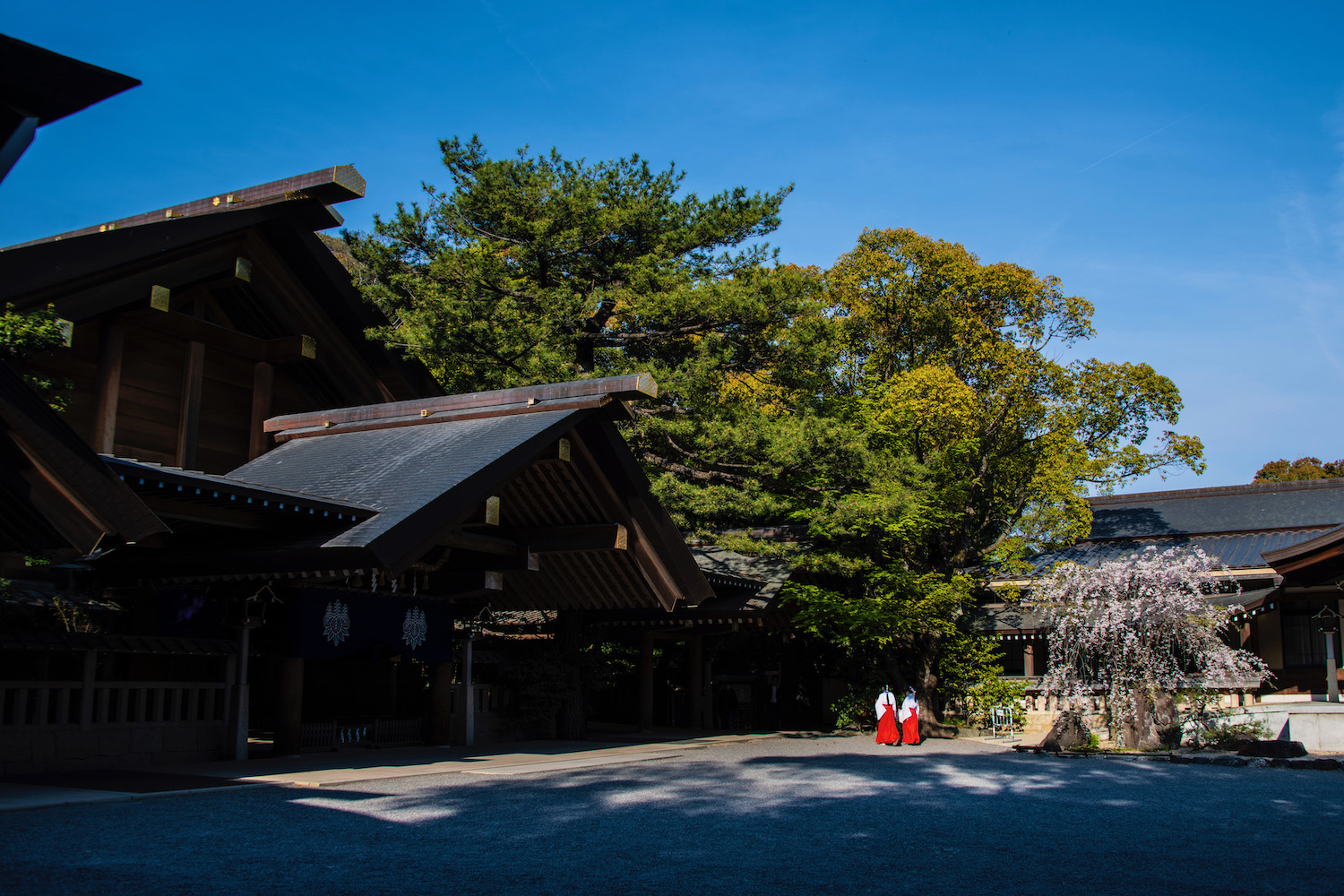
Is Nagoya Worth Visiting?
January 7, 2024 by Robert Schrader Leave a Comment
As often happens to me when I travel with an open mind and heart, an interesting thing happened. I was at Atsuta Shrine taking a self-portrait, when a man approached me. While I initially assumed he was a guard telling me to put the tripod away, it turned out he was simply a friendly local man with a story to tell.
“My name is Tanaka,” he said, and asked if he could walk with me as I re-acquainted myself with the shrine. Of course he could, I told him—I was delighted, in fact, that someone else’s presence had gotten me out of my own head, into which I so often settle as a solo traveler.
As we got on our way, we passed through a wall that dates back to the time of Nobunaga . One of the most consequential warlords in Japanese history, who just happens to be from Nagoya, Nobunaga is the figure I often think of when trying to put the city’s importance into perspective. You can say what you want about Nagoya’s contemporary physical state (which is largely due to the heavy bombing it suffered during World War II), but Japanese’s present wouldn’t be the same without the crucial chapters of the past that went down here.
To put it another way, Nagoya is absolutely worth visiting, although it’s not as immediately satisfying as most other Japanese cities. You don’t necessarily need to have a local guide, interspersing tales of his many years at Toyota (which is headquartered nearby) as he takes you to overlooked parts of shrines most tourists miss, though the more personalized your trip can be, the better.
The Best Things to Do in Nagoya
Start at nagoya castle—but don’t finish there.
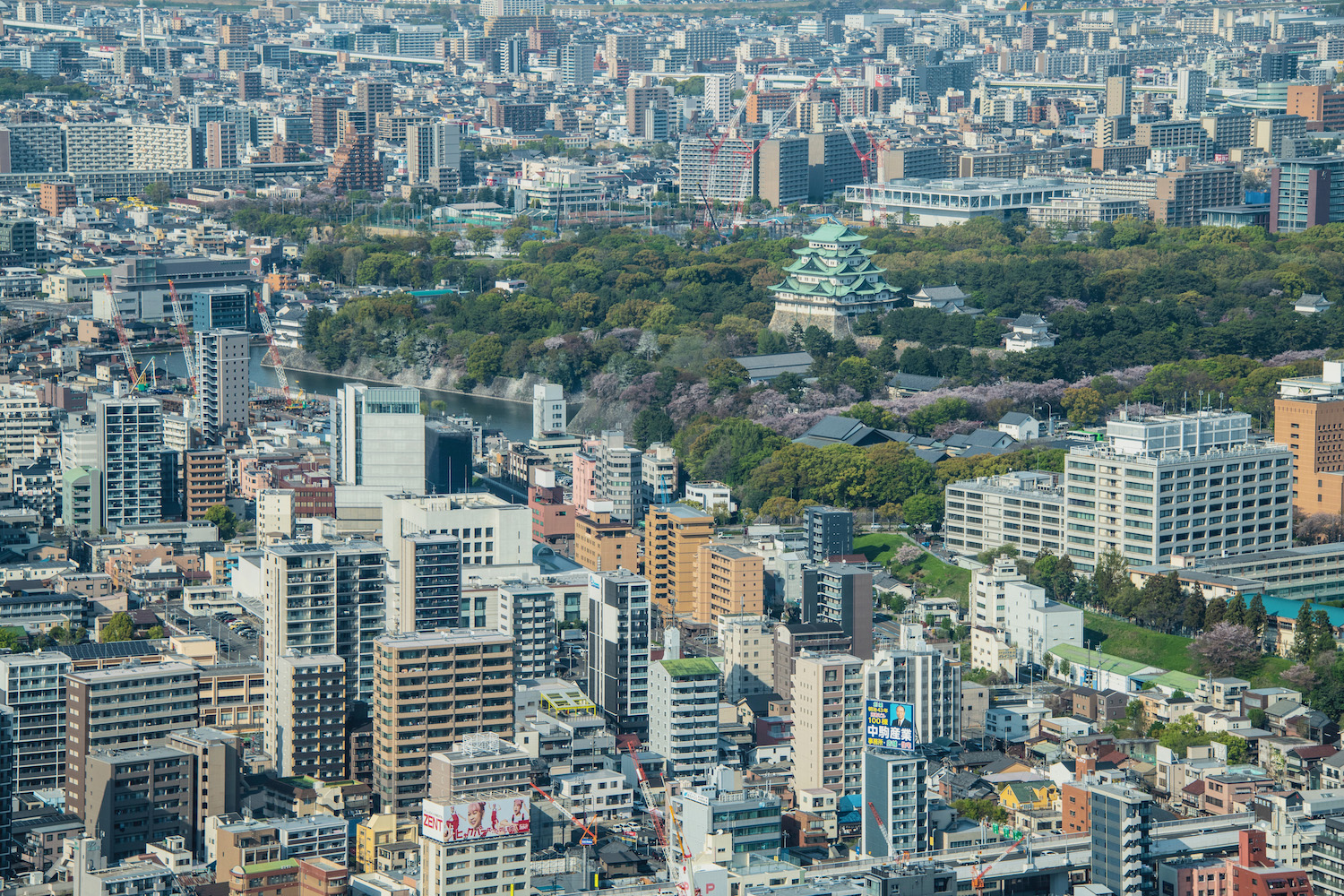
As Japanese castles go, Nagoya’s isn’t unique—it’s not one of the 12 “original” castles , nor is it architecturally distinct from Osaka Castle, which is a much more famous reconstruction. Still, Nagoya Castle is one of the icons of the city’s otherwise very modern cityscape. As we walked through Atsuta Shrine and Tanaka-san told me about his love of baseball, he recommended I enjoy the view of the castle from the Midland Square Sky Promenade (a great suggestion, if I do say so myself).
TIP: If you want to stay longer at Nagoya-jo and enjoy Japanese arts and crafts, I encourage you to try this fan-making workshop on for size .
Say a prayer at Atsuta Shrine
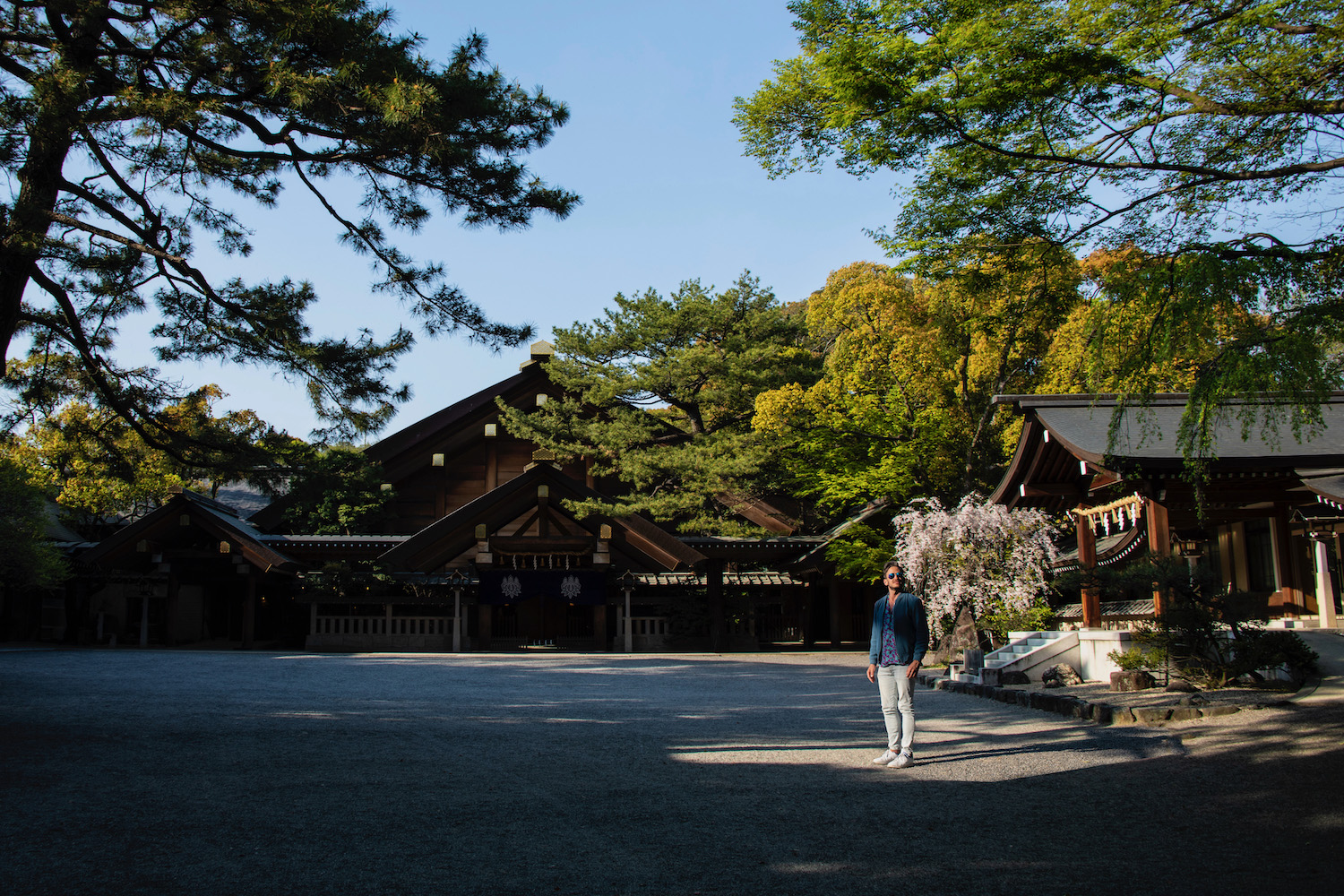
Another insight Tanaka provided me was that Atsuta Shrine is actually Japan’s second-most important Shinto shrine, after Ise Grand Shrine located just to the south in Mie . While this fact alone might not be enough to convince the average foreigner that Nagoya is worth visiting, the shrine’s spacious grounds (which are less than 10 minutes from Nagoya Station via the Meitetsu Line) are nonetheless a slice of serenity I think we can all appreciate.
(Or Osu Kannon)
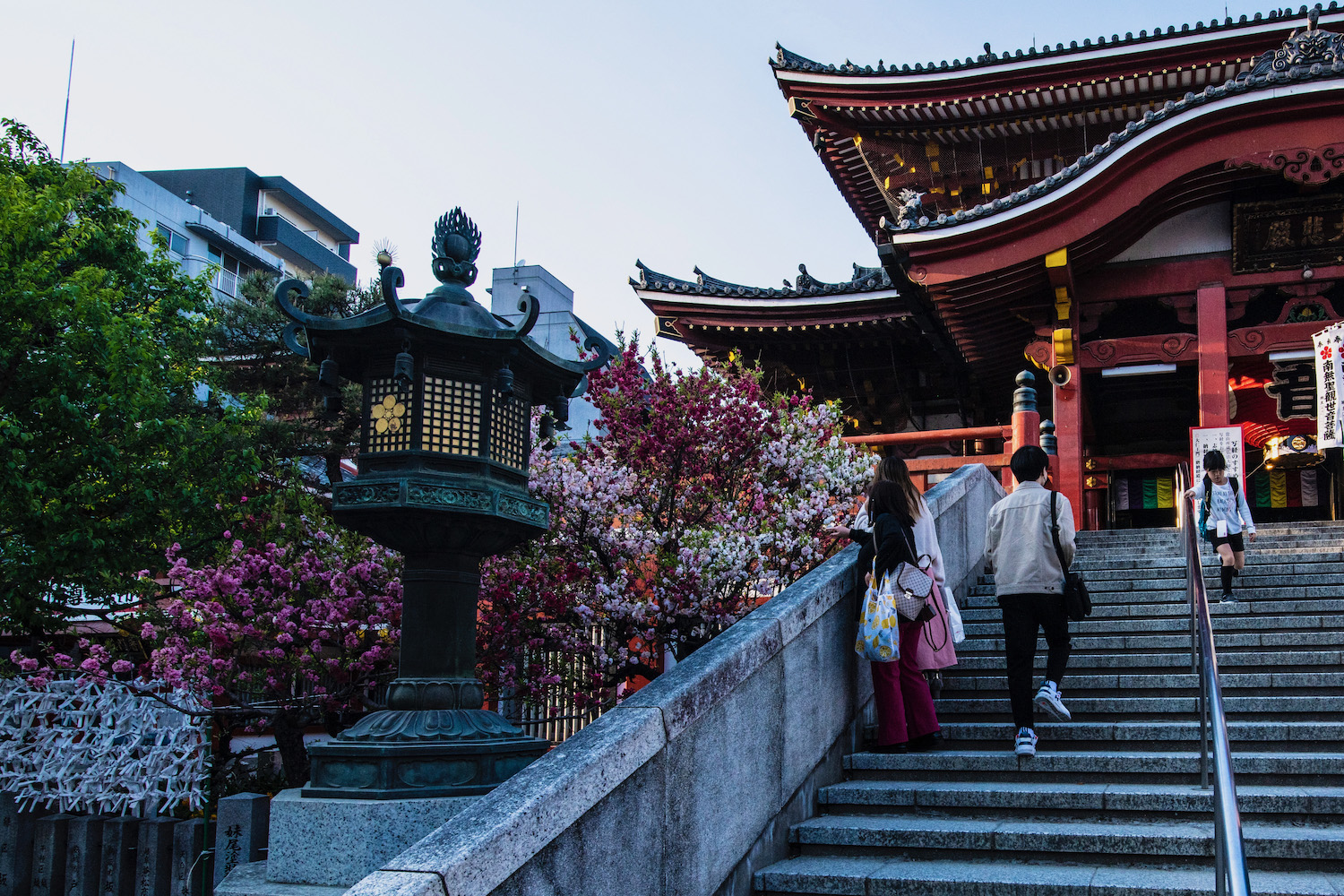
Before Tanaka bid me farewell—he of course snapped a selfie of us together—he reminded me to re-visit a spot that had proven one of my favorites during previous visits to Nagoya: Osu Kannon , a 12th-century temple (which has obviously been reconstructed since then) that sits near a sprawling shopping arcade of the same name. Like Atsuta Shrine, it’s an oasis of tranquility within an urban jungle, and at a bare minimum, a nice place to have a walk after lunch.
Chow down on Misokatsu
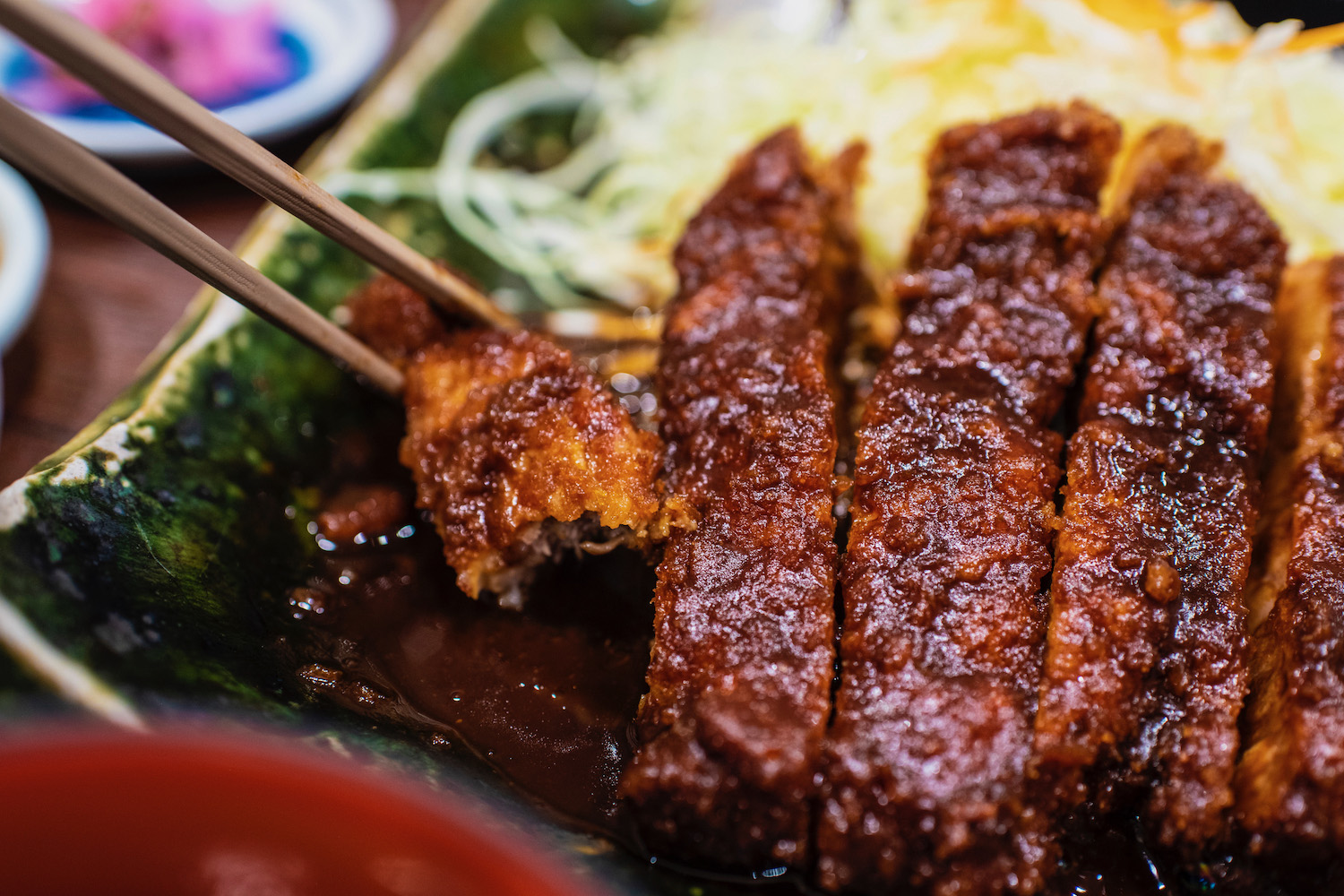
Which nicely segues into what I consider to be the #1 reason Nagoya is worth visiting: Misokatsu . If you want to start your trip off on the most delicious note, I’d probably recommend arriving an hour or two before your hotel check in, in which case you’ll want to head to the 9th floor of the Meitetsu Department Store and grab a seat at Yabaton . Here, as the smell of Nagoya’s most famous dish wafts in, try not to drown in your own drool as the smell of fresh-fried pork cutlet fills the air, and watch in awe as the waiter drizzles your tonkatsu with the sweet, red miso sauce that gives it its unique-to-Nagoya name.
Make a pilgrimage
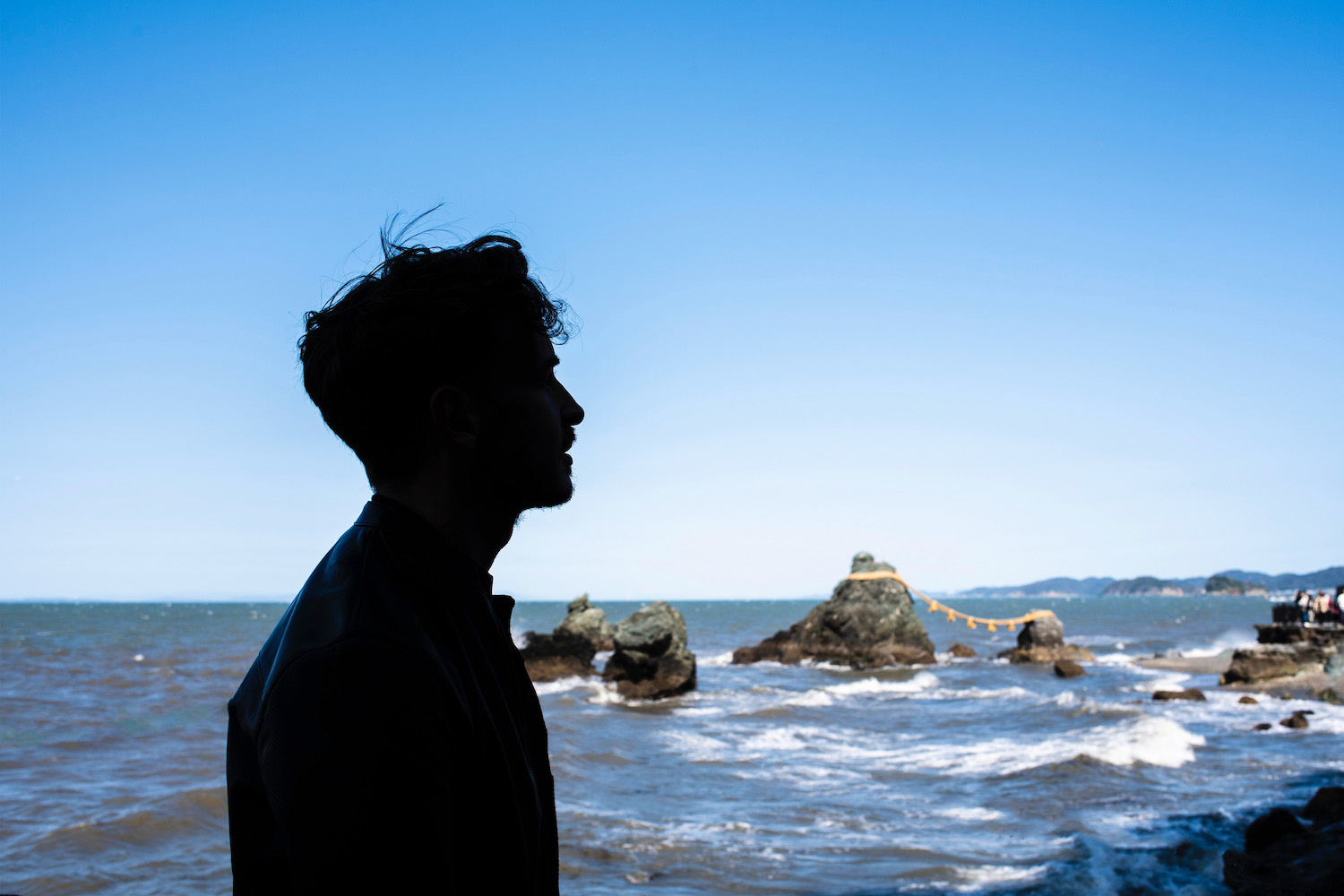
Another reason to visit Nagoya? Use it as a base for more peripheral discoveries, or a starting off point for them. For example, whether you take a day trip or a multi-day adventure, Nagoya is well-situated for exploring the Nakasendo , which was an ancient trading route between Kyoto and Edo (the former name of Tokyo). Likewise, Nagoya sits just up the (rail) road from Mie and Wakayama prefectures. While you can realistically visit places in Mie like the aforementioned Ise Shrine or the beef city of Matsusaka on day trips, I recommend spending a few nights in Wakayama, whether atop Mt. Koya , or hiking the Kumano Kodo pilgrimage.
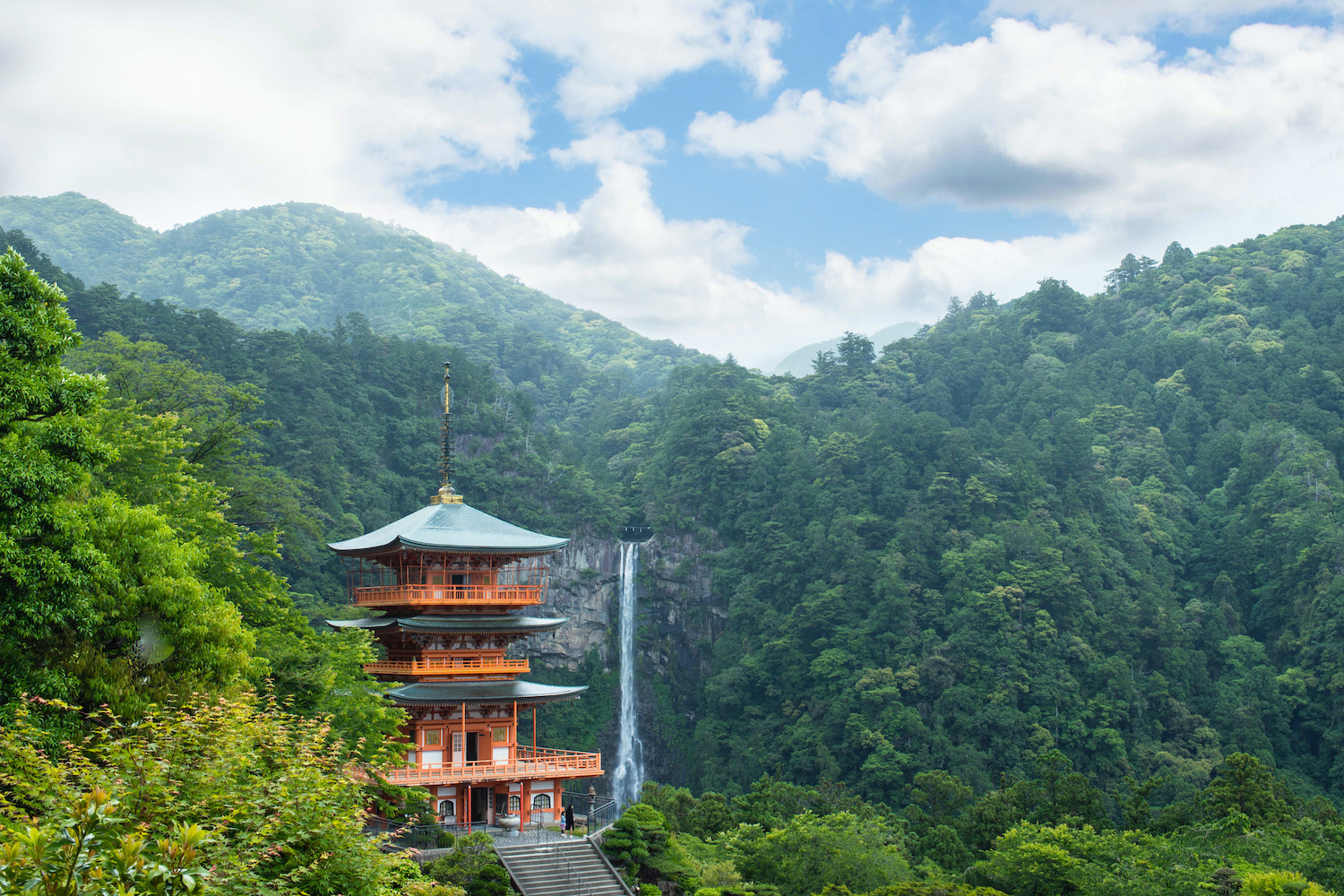
Where to Stay in Nagoya
Like the city itself, most hotels in Nagoya aren’t going to win any Japan-wide awards. On the other hand, there are plenty of stylish and affordable boutique properties in the city center. I stayed at Lamplight Books Hotel during my latest visit to Nagoya, while Nishitetsu Hotel Croom is also a place I wouldn’t think twice about calling home for a night.
Luxury hotels like The Royal Park Canvas are also convenient to things to do in Nagoya, if that sort of accommodation is more your style. On the opposite end of the spectrum, Trip & Sleep Hostel is a clean, centrally-located and affordable option if privacy isn’t among your chief concerns.
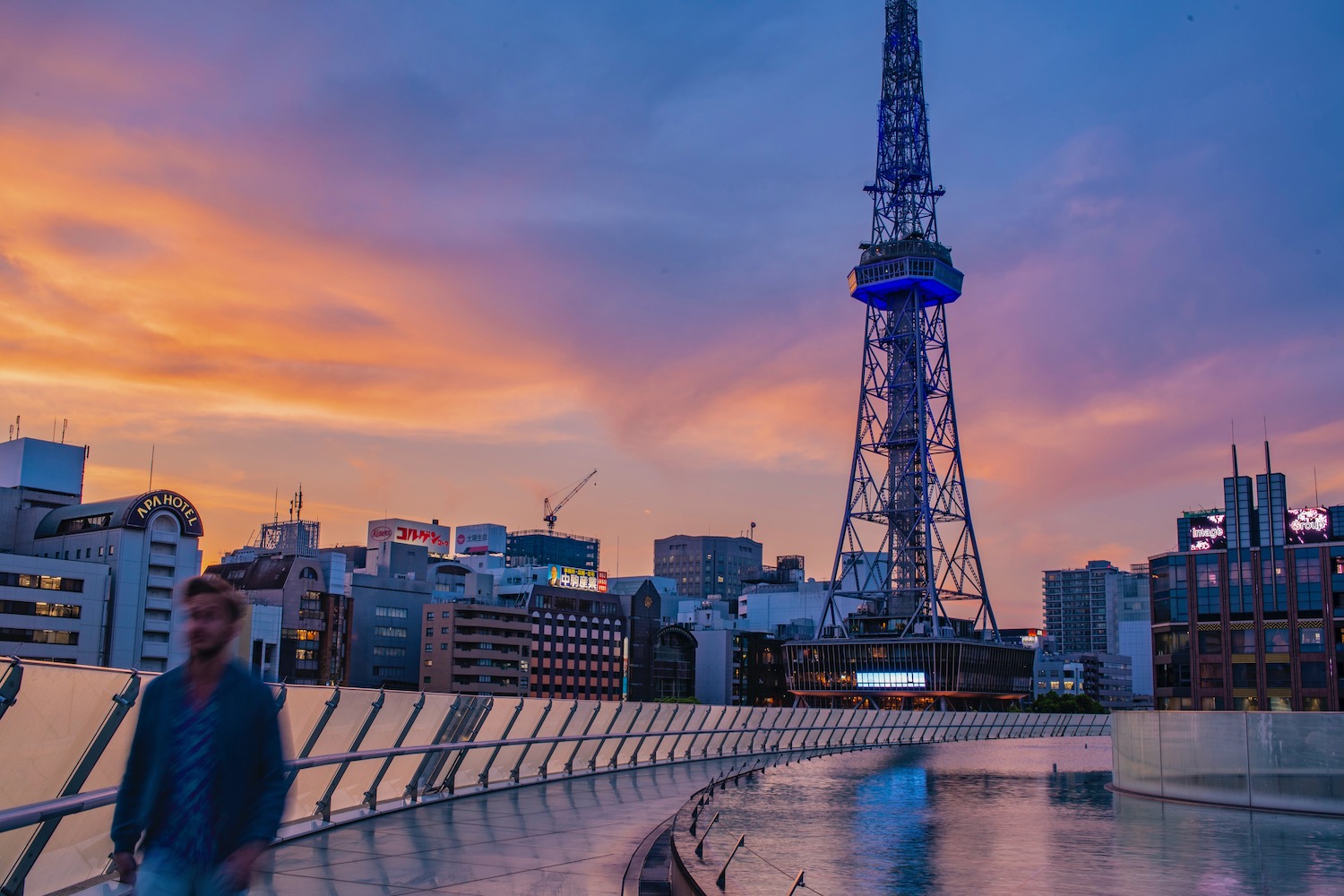
When to Visit Nagoya
As a general rule, Nagoya weather is similar to what you’ll find in Osaka and the lower-lying portions of the Kansai region—which is to say that most of the year features relatively agreeable temperatures and manageable precipitation. With this being said, cherry blossom season is the the most beautiful time to visit Nagoya, just as it’s the best time to visit Japan as far as most travelers are concerned.
Of course, autumn in Nagoya (and along the aforementioned Nakasendo) is none too shabby. You should be aware, however, that Nagoya’s fall season begins later than you might expect, as is the case with autumn in Japan ‘s most popular destinations. Peak colors can take until nearly the first of December to manifest! In winter, Nagoya rarely sees snow.
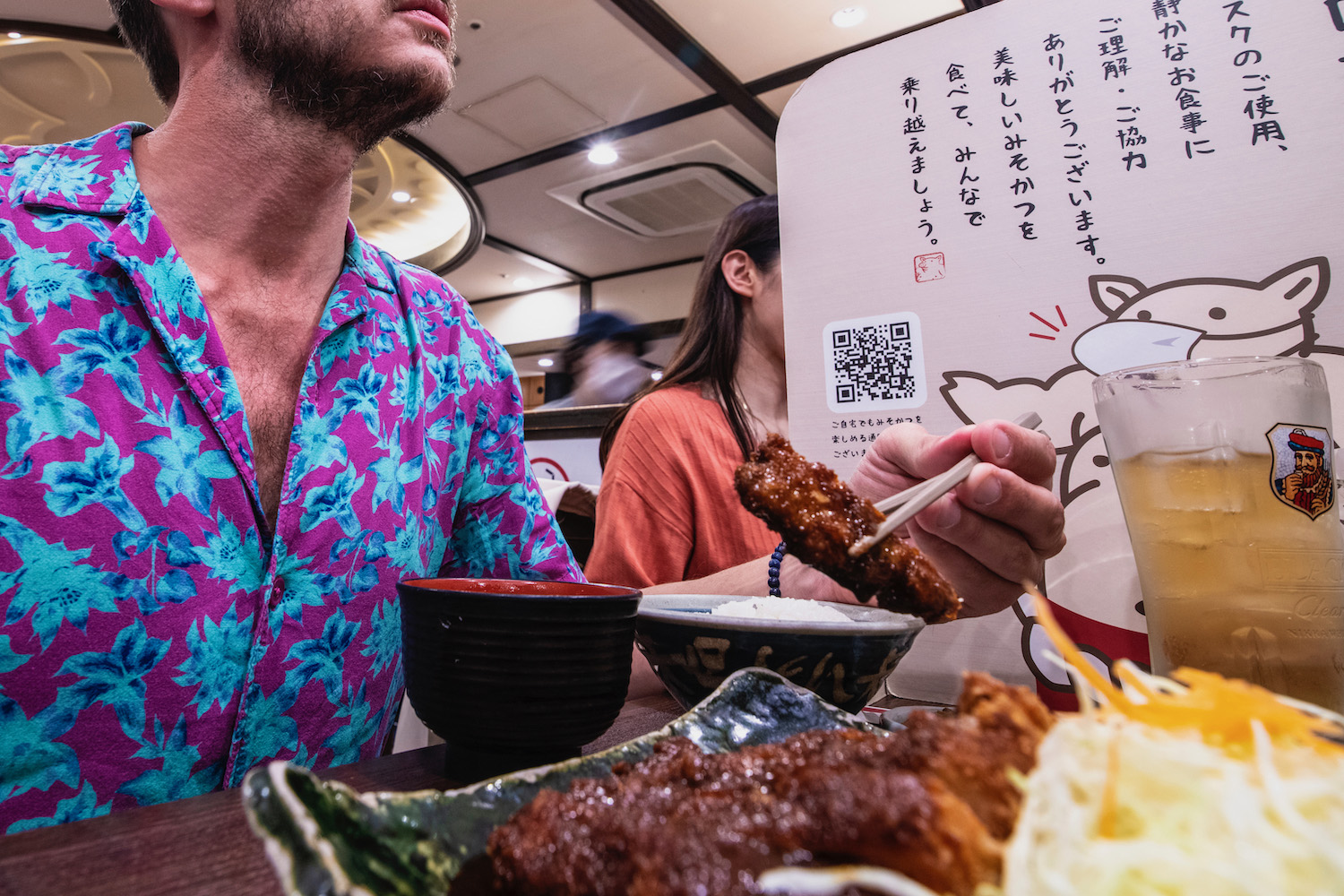
Other FAQ About Things to Do in Nagoya
What’s nagoya famous for.
In terms of attractions, Nagoya is famous for its eponymous castle, and for the sprawling Atsuta Shrine; it’s also well-known for being the birthplace of delicious misokatsu . Among Japanese, Nagoya is also infamous: For being badly bombed during World War II, which is why it seems less culturally and architecturally rich than other Japanese cities.
Is Nagoya worth visiting?
Nagoya is worth visiting if you’ve set realistic expectations for what the city has to offer. Additionally, it helps if one of two things are true: 1) You don’t have anywhere else in the country you want to visit more; or 2) You have enough time in Japan (let’s say one month in Japan or longer) that you can be a bit carefree with it.
How far is Kyoto from Nagoya?
Kyoto is about 130 km from Nagoya by road, which equates to a driving time of about two hours. On the other hand, the journey will take you about 35-40 minutes on the Nozomi Shinkansen, the fastest bullet train that currently exists.
The Bottom Line
Is Nagoya worth visiting? The exuberance of my Nagoya travel guide stands in stark contrast to the city’s lukewarm reputation. While it’s true that you’re probably not going to spend a long time here, or return here on multiple trips to Japan, there’s at least enough to justify a short stay if you have longer than two weeks in Japan . At minimum, you can sit down for a plate of steaming misokatsu on a layover between Shinkansen journeys, or make a quick trip to Nagoya Castle before walking the Nakasendo.
Plan Your Japan Trip

Subscribe to email updates!
Words, images and design ©2018-2024 Robert Schrader, All rights reserved. Read Privacy Policy or view sitemap .
- Tours & Experiences
- Tailor-made Trips
- Bahasa Indonesia
We are happy to see you again!
Continue with
Or use email.
No Account? Create one
Create account
Already have an account? Sign in
Quickly Sign up with
I agree to Japan Travel's Terms of Service and Privacy Policy . Terms of--> and acknowledge that Japan Travel's Privacy--> applies to me.-->
Email reset password link
Please check your inbox and click the link we will send to you.
- Transportation
Nagoya to Kyoto by Train
What is the best option to travel?

A common question tourists ask is “What’s the best way to get from Nagoya to Kyoto?” Several trains connect the two cities, while buses are also a viable option since the distance between Nagoya and Kyoto isn’t that great.
Shinkansen Options
Nozomi shinkansen.
Nozomi trains take 36 minutes from Nagoya to Kyoto. Nozomi shinkansen are the fastest bullet train to run that route and with no other stops in between the two cities, it’s the most expedient option. The cost of a ticket for this route is ¥5,640.
Hikari and Kodama Shinkansen
While the Nozomi Shinkansen (bullet train) is the fastest, the distance between the two cities is not great, so the Kodama (which stops at all stations) might be a viable alternative. If you hold the Japan Railways or JR Pass , you can take either the Kodama or the Hikari (2nd fastest train), but not the Nozomi.
The Hikari takes 40 minutes to travel the route between Nagoya and Kyoto, while the Kodama trains take 51 minutes. (Often, the Kodama leaves at 45 minutes past the hour and arrives in Kyoto at 36 minutes past the following hour.)
The Hikari and the Kodama costing ¥5,440. This is broken down into the basic fare of ¥2,520 and an express charge during regular seasons of ¥2,920. Children travel at half price.
Being a more “local” train, you are more likely to get a seat on the Kodama. In fact, the train I got was nearly empty. This slightly slower travel allows you to a glimpse of life in regional cities, away from the hurried businessmen rushing on their way to their meetings in Tokyo.
Even though the Kodama waits for the Hikari and Nozomi to overtake it at the main interchange stations, it still fulfills your need for speed, with a maximum speed of 285 km/h (175 mph). Just because you are on a slower train, it doesn’t mean you are getting on a second-rate train. There are great facilities for the sight-impaired, including braille signs in the bathroom, and lots of different drinks available in the vending machines.
Puratto Kodama Economy Plan
While the fare differences above may seem insignificant, the " Puratto Kodama Economy Plan " changes the picture totally in favor of the Kodama. Just by buying the ticket at least a day ahead at selected JR stations or JTB offices, you can get on the Kodama for only ¥4,100, plus you get one drink for free. You can use this drink voucher at a kiosk on the Shinkansen platform, or with a vendor on the train to get a soft drink or a beer.
This combination is known as a packaged ticket (train ticket plus drink), and you can only get it at JR Tokai Tours (a subsidiary of JR Central) located at Tokyo, Shinagawa and Nagoya Stations. You can get it at JTB or JTB Traveland counters all over Central Japan and Kansai, including Osaka, Kyoto, Nara, Shiga, Hyogo, and Wakayama. In JR Kyoto Station, there are two branches that sell this package. One is at the Central Exit, on the second floor. The other is at the Hachijo exit, on the first floor. They are usually open until 6pm or 7 pm.
JTB Free Plan Kyoto
Alternatively, tourists on a short stay passport stamp visiting Kyoto should also think about JTB's Free Plan Kyoto 2 Days tour package. This includes a return ticket from Nagoya to Kyoto by Kodama Shinkansen and a one- or two-night stay at a hotel, starting from ¥11,400 per person.
Ordinary Train Options (Non-shinkansen)
If travel on the bullet train is out of your budget, then there are ordinary JR trains. First, take a train from Nagoya to Maibara, and then change trains for one bound for Kyoto (they usually continue to Osaka and even to Himeji). The tickets are around ¥2,520.
Seishun Juhachi Kippu
During holiday periods there is an even cheaper alternative, the Seishun Juhachi kippu ticket. It is only ¥2,300 yen per coupon, and a “book” of 5 coupons can be shared between 5 people or 5 days. It can be used from 1st March to 10th April, 20th July to 10th September, and 10th December to 20th January. The ticket is valid for a whole day from 12am to 11:59pm, so if you are using this, I suggest that you use it to travel beyond Kyoto to Himeji or Nara for a day trip to make the most out of it. Between Nagoya and Kyoto, you can also stop by some historic towns that are often overlooked. Shigaraki , for example, was the imperial capital in 745, and has an fascinating story with its tanuki statues and unique pottery kilns.
Flex Rail Ticket with JR Tokai Tours
Discover a new way to explore the best of Japan by bullet train.
Getting there
Nagoya Station is less than an hour from Centrair Airport by a direct limited express train, making it a good alternative to Kansai or Narita Airports in reaching Kyoto.
- Share on Facebook
- Share on Twitter
- Copy link to share
By Bonson Lam
Community writer

Information
JR Kyoto Station Central Exit Karasuma Kyoto Shimogyo 〒600-8216 ( Directions )
jreast.co.jp
Book your trip
Find a nearby hotel, explore nearby.

Osaka Itami Airport to Kyoto

Kyoto Snapshots
By Amber Mezbourian

Futaba English & Japanese Bookstore

Kyoto Eco Trip Bicycle Hire
By Victoria Kamila
Top Articles
- Recommended

Tokyo One of the World's Most Walkable Cities

Kurobe Unazuki Canyon Route to Link with Tateyama Kurobe Alpine Route


Extraordinary Experiences in the Great Nature of Izu-Oshima, the Closest Island From Central Tokyo

2-Day Hachijojima Retreat: Recharge Your Mind and Body

Tokyo Takes 2nd Place on Top Coffee Cities List

Sapporo Beer Opens New Brewery in Tokyo’s Ebisu

Valley of Witches: a New Ghibli Park Attraction

2024 Grand Sumo Tournaments

Mount Omuro

Guide to Bringing Medicines Into Japan

Your Name: Real-Life Locations in Tokyo

Hachiko Statue in Shibuya

Iwatayama Monkey Park

Shibuya Crossing

Daikoku Car Meet

Kanamara Penis Festival

Guide to Suica Cards

Guide to PASMO Cards

Japanese Urban Legends
More from this category.
By Sarah Endarastya

Major Airports in Hokkaido

Cycling Rules in Japan
By Japan Travel

Convenient Bus Travel From Narita..
Join the discussion.

Let us know how we can help.
Help us improve JapanTravel.com
We welcome any suggestions regarding this content. Your feedback is confidential and will be used to help improve this page.
Suggest an edit
https://en.japantravel.com/kyoto/nagoya-to-kyoto-by-train/924
Thank you for your support!
Your feedback has been sent.
Kyoto: Getting there and around
Getting to kyoto.
- ¥ about 5,500
- several trains per hour
Nagoya and Kyoto are major stations on the JR Tokaido Shinkansen . Nozomi trains require about 35 minutes to reach Nagoya from Kyoto, while Hikari and Kodama trains take between 40 and 60 minutes. The regular one way fare from Kyoto to Nagoya is 5170 yen for a non-reserved seat and around 6000 yen for a reserved seat. The Japan Rail Pass fully covers Hikari and Kodama trains, but a supplement fee is required for riding Nozomi trains.
- One transfer
- ¥ 2,640
By local trains on the JR Tokaido Line, the one way trip from Kyoto to Nagoya takes about 2 hours and 15 minutes and requires a transfer of trains at Maibara Station. The one way fare is 2640 yen.
- ¥ about 2,500
- multiple buses per day
Multiple companies operate frequent daytime highway buses between Nagoya Station and Kyoto Station . The one way trip takes around 2.5 hours and costs around 2500 yen or less. Online reservations can be made through Japan Bus Online .
Above fees and schedules are subject to change. Be sure to check current yen exchange rates .
Getting around
Kyoto features a rectangular street system. Unlike the streets in other Japanese cities, most of central Kyoto's streets are named. The main streets running from east to west are numbered in ascending order from north to south, and are about 500 meters apart from each other, with several smaller streets in between. For example, Shijo means "4th Avenue" and Nijo means "2nd Avenue".
Kyoto's city center with the highest concentration of dining, shopping and entertainment opportunities, is located around the junction of Shijo-dori (4th Avenue) and Kawaramachi-dori (Kawaramachi Street). JR Kyoto Station is located south of the city center at the height of Hachijo-dori (8th Avenue).
The most prominent north-south street is Karasuma-dori (Karasuma Street), which runs from Kyoto Station via the city center to Kyoto Imperial Palace . Another north-south axis is Kamo River, about one kilometer east of Karasuma-dori.
Kyoto has a rather inadequately developed public transportation system for a city of its size, consisting of two subway lines, a dense bus network and several railway companies, whose lines are not always conveniently connected with each other. Taxis and bicycles can be worthwhile alternatives.
The recommended way to get around Kyoto by public transportation is to use an IC card , such as Icoca, which is accepted on virtually all trains and buses in the city. Alternatively, travelers intending to use buses or subways extensively, should consider one of the 1-day passes available. See the ticket section below for more details.
Below is a simplified map of the railway and subway lines of Kyoto:
Few of Kyoto 's tourist attractions are located close to subway or train stations. Instead, Kyoto has a dense bus network with direct bus lines from Kyoto Station and/or the city center around Shijo-dori and Kawaramachi-dori to most major sights.
Kyoto is served by multiple bus companies. For central Kyoto, the green Kyoto City Bus buses are most numerous and useful. The red buses by Kyoto Bus are second most prominent and tend to be convenient to access sights in more outlying areas of the city.
The tourist offices provide a useful English network map for the Kyoto City Buses, which makes it quite easy for foreign visitors to access tourist attractions by bus. Despite the good map and English displays and announcements, however, getting off at the correct bus stop can still be stressful, especially in crowded buses.
Since buses are small and operate surprisingly infrequently even on some major routes, buses to major tourist sights can often get crowded, especially on weekends and during holidays. In addition, much time can be lost when buses get stuck or only proceed slowly in the busy street traffic. Consequently, it is recommended to use subways and trains as much as possible, and use buses only for medium and short distances, for example, from the closest subway station to the destination.
Most buses are entered through the back door and left through the front door. The fare has to be paid when leaving the bus. Inside much of central Kyoto, there is a flat rate of 230 yen per ride. Outside the flat fare zone, the fare increases with the distance. Click here for more information on riding buses.
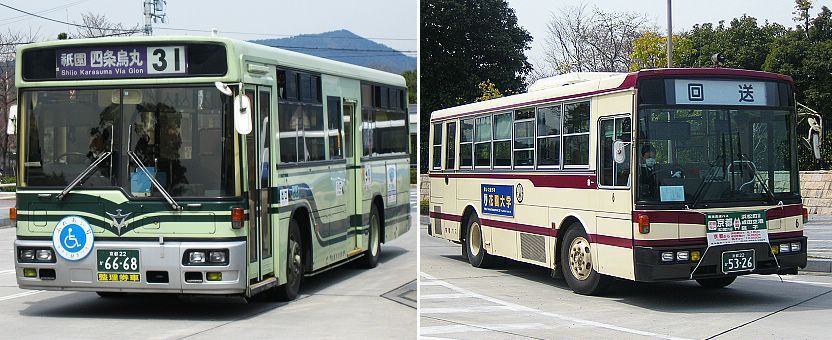
There are two subway lines in Kyoto , the Karasuma Line which runs from south to north along Karasuma-dori and stops at JR Kyoto Station, and the newer Tozai Line which runs from east to west and meets the Karasuma Line at the intersection of Karasuma-dori and Oike-dori.
Japan Railways
All JR lines, including the Tokaido Shinkansen , pass through or commence at JR Kyoto Station . JR trains can be a convenient for accessing the Arashiyama area (JR Sagano Line) and some attractions in southern Kyoto along the JR Nara Line, e.g. Fushimi Inari Shrine and Uji .
Other Railways
- Hankyu Railway connects Kyoto with Osaka . The line initially runs below Shijo Avenue from Kawaramachi westwards in direction of Osaka. It is a good option for accessing the area around Katsura Rikyu , from where a branch line also connects to Arashiyama .
- Keifuku Railway (also known as Randen) operates two tram-like train lines in northwestern Kyoto. For train lovers, a ride on these trains is a small attraction by itself. The lines can be an option for accessing Arashiyama and the area around Ryoanji and Kinkakuji .
- Keihan Railway 's main line runs next and parallel to Kamo River, but unfortunately does not connect to Kyoto Station . The line continues to Osaka and is an alternative to the JR Nara Line to access some of the attractions in southern Kyoto.
- Eizan Railway operates two train lines from where the Keihan Line ends, Demachiyanagi Station. One line leads to Kurama , while the other runs to the base of Hieizan .
- Kintetsu Railway connects Kyoto Station to Nara . Note that some trains on the Karasuma Subway Line continue to run on the Kintetsu Nara Line and the other way around.
By sightseeing bus
The Sky Hop Bus is an expensive but convenient way to visit Kyoto's most famous sightseeing spots. Double-decker buses with an open-air second floor run clockwise every hour from Kyoto Station in a large circle around the city, stopping near major tourist sites along the way, including Nijo Castle , Kinkakuji , the Imperial Palace , Heian Shrine and Kiyomizudera . A 12-hour pass costs 2500 yen and a 24-hour pass costs 3600 yen and can be purchased through Klook .
Kyoto is probably the Japanese city with the highest concentration of taxis . Especially in the city center, taxis are found everywhere. Taxis can not only be a more comfortable, but also an economical alternative to buses on short to medium distances for groups of three or more.
Most taxis accommodate up to four passengers (not including the driver), while larger vehicles are able to accommodate an additional fifth passenger. The rate starts around 610 yen for the first two kilometers and increases by 80 yen for every additional 300-400 meters traveled.
Kyoto City's simple layout and flat terrain make it easy and convenient to explore by bicycle . Numerous bicycle rental outlets can be found around the city, especially around major stations, such as Kyoto Station or in popular biking areas like Arashiyama . Typical rental prices are around 1000-1500 yen per day for basic bicycles and around 1700-2000 yen for electric assist bicycles. Some lodgings may provide their guests with bicycles for a small fee or for free.
Kyoto is generally a bicycle-friendly city with relatively easily navigable roads and a handful of cycling routes, most notably along Kamo River. Designated bicycle parking is often freely available around popular sightseeing spots. The situation is a little bit more challenging in the city center due to congested roads, crowded sidewalks and a lack of designated parking areas. Also, distances to some of the more outlying sightseeing spots should not be underestimated. For example, it is about eight kilometers (typically a 45-75 minute ride) from Kyoto Station to Kinkakuji or about ten kilometers to Arashiyama .
Passes and Tickets
See also our separate page about the various passes available for the Kansai Region .
The prepaid IC card available in Kyoto is called Icoca . It does not give you any discounts over regular tickets, but it makes the process of taking trains and buses easier, as you do not always need to buy a ticket for each ride. Icoca cards can be purchased through ticket machines at JR stations. Local non-JR railway companies offer their own IC card called Pitapa ; however, Pitapa is a postpaid card that works more like a credit card and is targeted at residents.
Icoca and Pitapa can be used on virtually all trains and buses in and around Kyoto (and most other major cities in Japan). Additionally, eight other IC cards from other major cities of Japan can also be used on the trains and buses of Greater Osaka and Kyoto, including Suica, Pasmo, Kitaca, Toica, Manaca, Sugoca, Nimoca and Hayakaken.
The Kansai One Pass is a special version of Icoca exclusively for foreign tourists that additionally qualifies for discounts at various attractions in the Kansai Region . It is available for sale at Kansai Airport and major railway stations in the Kansai Region.
Furthermore, the following one day passes are available for Kyoto :
- Kyoto Sightseeing Card (1100 yen) Unlimited use of Kyoto's two subway lines and most buses (including Kyoto City Buses, Kyoto Buses, JR buses and Keihan buses) in central Kyoto and outskirts, including Ohara and Daigoji on one calendar day. The pass also comes with discount coupons for selected sights in Kyoto. It can be purchased from ticket machines in subway stations, at bus ticket centers and from some hotels. The pass can pay off especially if you visit outlying areas such as Ohara . The downside is that, besides the subway lines, the pass does not cover any other trains which are often a convenient means of getting around.
- Kyoto Subway One Day Card (800 yen) Unlimited use of Kyoto's two subway lines on one calendar day. The card can be purchased from ticket machines at subway stations. It generally pays off if you use subways more than three times per day, however its value is restricted by the subway's limited coverage area.
Questions? Ask in our forum .
Links and Resources
Arukumachi kyoto route planner, kansai one pass, kyoto municipal transportation bureau, keihan railway, kintetsu railway, hankyu railway, kansai airport transportation, osaka airport transport, sky hop bus, enjoy cycling in kyoto, keifuku railway, eizan railway, hotels around kyoto.
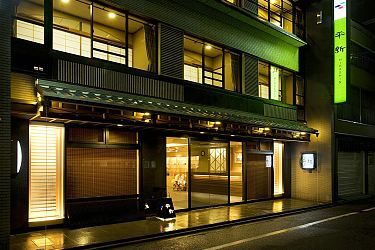
Experiences around Kyoto
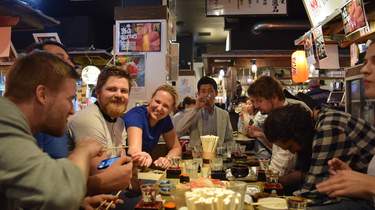
Kyoto to Nagoya Train
Explore the most current information on trains from Kyoto to Nagoya
Kyoto to Nagoya Trains Information
Travel Time
Approximate
Ticket Cost:
Kyoto to Nagoya Trains Schedule
The Kyoto-Nagoya railway route offers some of the most impressive views in Japan, making train travel between the two cities a popular choice. It is not just the beautiful scenery that inspires people to travel by railway. There are trains that run from Kyoto to Nagoya that offer incredibly fast travel times and can cover the distance from one city center to another in just 30 minutes.
Kyoto to Nagoya Train Map
Trains from Kyoto to Nagoya are all equipped with top-notch onboard amenities to make sure you have an enjoyable travel experience, such as comfortable seats, ample legroom, and more than sufficient luggage storage space during the journey. They boast astonishingly fast travel times, three travel classes to choose from, and a broad timetable with up to 34 departures every day (you can find the detailed schedule as well as book your railway ticket on Rail Ninja ).
Book Japanese Train Tickets
Q&a: travel from kyoto to nagoya.
HOW FAR IS KYOTO FROM NAGOYA BY TRAIN?
HOW MUCH DOES A BULLET TRAIN FROM KYOTO TO NAGOYA COST?
Shinkansen Kyoto to Nagoya train tickets cost about 58 USD per one-way ride, although the price might differ depending on travel class, reserved or unreserved seats, as well as how much in advance you book.
Explore More of Japan
Tokyo to osaka train, nagoya to kyoto train, nagoya to tokyo train, kyoto to osaka train.
A First-Time Visitor’s Guide to Kiso and Nagoya
Book your individual trip , stress-free with local travel experts
- roughguides.com
- kiso-nagoya-first-time-travel-guide-japan
Plan your tailor-made trip with a local expert
Book securely with money-back guarantee
Travel stress-free with local assistance and 24/7 support
written by Aimee White
updated 01.04.2021
If you travel through Japan you’ll soon discover it isn’t all about skyscrapers, neon lights and fast-paced city life. Far from it; the diversity of experiences the country offers spans ancient cultural heritages, breathtaking natural scenery and plenty more. Two shining examples? Kiso and Nagoya. Kiso, in central Japan, offers mountainscapes, dense forests and historic charm, while neighbouring Nagoya has a long history of manufacturing prowess. Find out what the two places have to offer with our first timer’s guide to Kiso and Nagoya.
Why Visit Kiso, Nagano
How to get to kiso, nagano, what to see in kiso, nagano, why visit nagoya, how to get to nagoya, what to see in nagoya, tailor-made travel itineraries for japan, created by local experts.

13 days / from 3535 USD
Small Group Tour: Splendours of Japan
Discover the allure of Japan on our small group tour (max 16 guests). Unveil Tokyo, Kanazawa, Kyoto, Osaka, and Okayama through guided explorations. Immerse in tea ceremonies and relish in the captivating beauty of these iconic destinations. Regular departures ensure an unforgettable journey.

14 days / from 4070 USD
Small Group Tour: Secrets of Japan
Embark on an exceptional small-group tour, available monthly, unveiling Tokyo, Hakone, Hiroshima, Osaka, Kyoto, and beyond. Uncover Japan's hidden gems, from serene shrines to bustling cities, and immerse in enchanting forests.

10 days / from 2795 USD
Small Group Tour: Highlights of Japan
Exciting small-group tour with monthly departures. Immerse in Japanese culture, challenge a pro in a sumo suit, wander Arashiyama's bamboo groves in Kyoto, and relish a kaiseki feast with Maiko entertainment - all included in this fascinating small group tour.
Tailor-made trips for Japan
Kiso lies in Nagano Prefecture and is one of the most scenic spots to visit in the area. The town was once the centre of Japan’s central trading route; today, visitors can take in the nostalgic wonders of its old main road, the Nakasendo. While there’s plenty of history to uncover, its natural beauty is just as impressive, from scenic Nagano mountain hikes to unique rock formations.
Kiso is located in the southwestern part of Nagano Prefecture. It’s easiest to get here by train; take the Shinkansen (bullet train) from Tokyo to Nagano in 1hr25min; you can also take the train from Kanazawa and Nagoya. Top tip: the Nagoya route passes through the scenic Kiso River Valley so you’ll get a sneak-peek of the area before you arrive! Buses to Nagano take longer but are cheaper; routes run from Hida-Takayama and Tokyo, and take between three to six hours.
Once you arrive in Nagano, you can take a local train to your final destination in Kiso.

Narai-juku, Kiso Road, Japan, © まちゃー / PIXTA(ピクスタ)
Kiso Road (otherwise known as Kisoji) made up the central part of the Nakasendo, which was an important road that connected Kyoto to Edo (modern-day Tokyo) during the Edo period (1603–1868). Stretching along the Kiso River, the Kiso Road crosses a steep mountain pass, winds through a deep valley and consists of 11 post towns.
There are plenty of ways to experience this Japanese Heritage Site for yourself. Start off by admiring the abundance of old-fashioned Japanese landscapes and feel as if you’ve truly stepped back in time. Make sure you browse the variety of traditional crafts and local food for sale. And on the note of food, take the time to sample Kiso’s delicious cuisine – which is made all the more better in the peaceful, quiet valley setting.
Narai-juku , or Narai Post Town, is a small, picturesque town dotted along the Nakasendo Way and Kiso Road. It’s the steepest post town along the Kiso Road, so many visitors here enjoy pushing themselves with walking the sharp incline! However, the route is helped by the addition of inviting, traditional ryokans.
Some of the highlights of Narai-juku include touring the Nakamura Residence. This was the former residence of a wealthy business owner and is set in an Edo-period townhouse with authentic artefacts on display. Afterwards, head over to Taihoji Temple, where you can read suggestions that Christians once resided in the area. You can also find out more about the customs and culture of the local community at Narakawa Museum of History and Folklore. And, as you stroll past the low-set buildings, be sure to stop off at the shops selling dried fruits, local sake, woodwork and more.

Narai-juku historic Big Bridge landmark with landscape © Olga Kashubin/Shutterstock
Tsumago-juku
Further along the Nakasendo Way is Tsumago-juku . You’ll really get a feel for the area’s ancient history with its preserved museums and restored castles. It’s not just a tourist attraction, though, as the town is fully inhabited with local residents.
The Tsumagojuku Honjin is a reconstruction of an original inn that once accommodated feudal lords, but Waki Honjin Okuya , the town’s secondary inn, still stands in its original form. It has since been converted into a popular museum, including a picturesque moss garden. Its success accounts for some ten percent of the total visitors that visit Tsumago-juku every year! Next up, head to Tsumago Castle. Although the castle was destroyed in the seventeenth century, some of its ruins remain. Its mountain-top position affords incredible views over lovely Tsumago-juku below and neighbouring Midono-juku.
Another top thing to do in Nagano is to take an excursion from Tsumago-juku to the well-preserved Magome-juku. While Magome-juku is located in Gifu prefecture (not Nagano), you can still enjoy more of the Nakasendo Way here, before returning to Tsumago-juku by local bus.

Tsumago, Kiso Valley, Japan © Daniel Andis/Shutterstock
Nezame-no-toko Gorge
Nezame-no-toko Gorge is well-known for its uniquely shaped rocks that protrude from the Kiso River. The site is so fascinating that there’s no doubt it lives up to its name, “Bed of Awakening”. Take in the grey monoliths jutting out of the depths of the emerald green water – and take plenty of photographs to treasure this unique view. Legend has it that Urashima Taro, the protagonist of the Dragon Palace fairytale, once fished at this site.

Nezame-no-toko © kittis/Shutterstock
Atera Valley
Atera Valley is undoubtedly one of the most beautiful spots in Nagano prefecture. Hemmed in by dense, lush foliage and rocks of all sizes, its river water is so clear that you can see the river bed. In fact, the water is so striking that it even has its own name: Atera Blue.
There’s no better way to immerse yourself in nature than by hiking through the Atera Gorge. Feel at one with nature as you breathe in the flora, go for a swim or even choose to camp.
Visiting Kiso means savouring the natural and historical beauty of the area. With untouched flora and pristine buildings, visitors will enjoy a first-hand experience of Japanese culture in its historic and natural forms.

Atera Valley in Autumn © king of pop/Shutterstock
Nagoya is in Aichi Prefecture, and is hailed as the ‘manufacturing kingdom of Japan’ for good reason. It has a history of innovative manufacturing that has created something of a legacy for the city, which you’ll find out more about in this guide. From skilled puppets to thriving industries, visitors have plenty of itineraries to choose from in lively Nagoya.
Related articles from the blog

Nagoya is well-connected with trains, buses and airports. Tokyo, Osaka, Kyoto, Fukuoka and Kanazawa operate Shinkansen (bullet trains) that take as little as 36 minutes to Nagoya Station, with JR lines also an option. Buses depart from the same cities (except Fukuoka) and take between two to five hours to reach Nagoya Station. You can also fly into Central Japan International Airport (Centrair) from Kochi, Fukuoka and Izumo airports with flight times averaging 1hr.

Inuyama Castle in Japan © Takashi Images/Shutterstock
Inuyama Castle
Inuyama Castle was built in the fifteenth-century and stands at 19m tall. As beautiful as it is to look at, its story lies hidden in the details; for example, the castle towers are a rare example of the Muromachi period style. Not only is it one of twelve remaining original castle towers in Japan, but it’s also the oldest existing wooden castle tower in the country, too. Wondering what to do in Nagoya? With so much wood used in its construction, this castle has a history like no other – making it one of the top sites to visit in Nagoya and the wider prefecture.
Enjoy the beauty and woodworking skills of this traditional craftsmanship for yourself by touching the smooth wood that has stood for 500 years; hear the heavy floorboards creak beneath your feet; and take in the musky smell of the ancient fortress. At 80m tall, it’s not the tallest castle but overlooks the appealing Kiso River.

Inuyama Castle in Nagoya © aandreev/Shutterstock
Enjoy a fun day out at Meiji Mura . This open-air museum is laid out like a village with its Meijia period-style buildings as well as Edo period-style architecture. The Meijia period symbolises the age when Japan adopted Western influences, from 1868 onwards. It’s also combined with more traditional Edo period-style wooden architecture, too.
While you’re here, take in the authentic aesthetics - but there’s ample opportunity to get stuck in, too! Dress up in Meiji-era clothing, climb aboard a steam locomotive or play with otedama and kendama . Otedama are small bags filled with beans that can be passed around and juggled, while kendama is made up of a wooden handle, two cups and a ball connected by string (guess where the ball has to go?).
There’s also archery, old streetcars and more - fun for all ages.

Bathhouse at The Museum MEIJI-MURA in Japan © topimages/Shutterstock
Inuyama Karakuri Museum
You only have to visit Inuyama Karakuri Museum to discover just how far back Nagoya’s innovative status goes. Karakuri (meaning ‘trick’ or ‘mechanism’) is the traditional craft-making skill of dolls that ‘perform’ via a series of strings or mechanical devices. Their creation is so refined and intricate that they’re able to carry tea, shoot arrows and more.
Visitors to this intriguing museum can learn all about the history of this traditional craft. There’s a variety of karakuri dolls on display, and you can also see craftspeople at work during insightful daily demonstrations (twice-daily; 10.30am and 2pm).

Japanese traditional doll © kou2341/Shutterstock
TOYOTA Commemorative Museum of Industry and Technology
If you’re in Nagoya, you simply have to visit the TOYOTA Commemorative Museum of Industry and Technology . Nagoya Japan is famous for its thriving automobile business. This museum showcases the history of TOYOTA’s manufacturing prowess, giving you the chance to grips with the automobile giant’s ingenuity and global success.
As well as displays of innovative machinery, inside the museum you’ll have the chance to find out more about car production and TOYOTA’s first mass-produced automobile. Learn about manufacturing safety and technology as well as the latest developments, like robots used for painting and welding. Once you’ve soaked up as much information as you can, make sure you check out the classic Toyota models on display.
It’s clear to see that Nagoya’s manufacturing skills have developed over the centuries, but this is arguably what Nagoya does best – these hardworking cultural foundations were set several hundred years ago. There’s no wonder that this legacy is one of the main things that Japan is famous for. Behind these innovative creations are the hard-working people of Nagoya. Thanks to them, this manufacturing kingdom of Japan knows how to work harder, better, faster, stronger. It’s exciting to imagine what lies ahead for it.

Ancient wooden spinning wheel A the TOYOTA Commemorative Museum of Industry and Technology © Lerner Vadim/Shutterstock
This article was created in partnership with Chubu District Transport Bureau.

Aimee is an in-house Senior Travel Editor at Rough Guides and is the podcast host of The Rough Guide to Everywhere. She is also a freelance travel writer and has written for various online and print publications, including a guidebook to the Isle of Wight. Follow her on Twitter at @aimeefw .
- Sponsored content
- See & Do
Planning your own trip? Prepare for your trip
Use Rough Guides' trusted partners for great rates
Travel advice for Japan
From travel safety to visa requirements, discover the best tips for traveling to Japan
- Culture and Etiquette in Japan
- Eating and drinking in Japan
- How to get to Japan
- Getting around Japan: Transportation Tips
- Shopping tips for Japan
- Travel Tips Japan for planning and on the go
- When's the best time to visit Japan?
Find even more inspiration for 31 here
Ready to travel and discover japan, get support from our local experts for stress-free planning & worry-free travels.
- Where to stay
- Itineraries
- Travel advice
NAGOYA TO KYOTO TRAIN
Nagoya to kyoto bullet train facts, nagoya to kyoto shinkansen.
Traveling through the scenic countryside of Japan on a high-speed train is always an exciting experience and one of the best ways to admire the beauty of the incredible country. The trains running from Nagoya to Kyoto were designed with traveler's comfort in mind, so you can rest assured that they provide everything you might need for a worry-free ride, including cushy seats, ample legroom, and generous luggage space.
Apart from great onboard amenities, the Nagoya - Kyoto trains are famous for their exemplary punctuality and broad schedule, offering up to 34 daily departures and making a train ride one of the most convenient ways to travel between the city centers of Nagoya and Kyoto. On Rail Ninja, you can check out the main information about the train route (timetable, ticket prices, travel distance, etc.) and book your tickets in a matter of several minutes!

Book Train Tickets from Nagoya to Kyoto
What to know about nagoya - kyoto shinkansen.
How far is Nagoya from Kyoto by train?
The distance between the beautiful cities is only 134 km (83 mi), which means that fast and modern Nozomi Nagoya to Kyoto trains will take you to your destination in only about 36 minutes! This is the fastest way to travel between these popular Japanese destinations.
Can you do a day trip from Nagoya to Kyoto?
Sure! As the distance between the two cities is only 134 km (83 mi) you can travel from Nagoya to Kyoto by train and reach your destination in just 36 minutes! This leaves you a lot of room to explore magnetic corners of magnificent Kyoto and return to Nagoya within one day!
How late do trains from Nagoya to Kyoto run?
- Kyoto Tourism
- Kyoto Hotels
- Kyoto Bed and Breakfast
- Kyoto Vacation Rentals
- Flights to Kyoto
- Kyoto Restaurants
- Things to Do in Kyoto
- Kyoto Travel Forum
- Kyoto Photos
- All Kyoto Hotels
- Kyoto Hotel Deals
- Last Minute Hotels in Kyoto
- Things to Do
- Restaurants
- Vacation Rentals
- Travel Stories
- Rental Cars
- Add a Place
- Travel Forum
- Travelers' Choice
- Help Center
Osaka Vs Nagoya - Kyoto Forum
- Asia
- Japan
- Kinki
- Kyoto Prefecture
- Kyoto
Osaka Vs Nagoya
- United States Forums
- Europe Forums
- Canada Forums
- Asia Forums
- Central America Forums
- Africa Forums
- Caribbean Forums
- Mexico Forums
- South Pacific Forums
- South America Forums
- Middle East Forums
- Honeymoons and Romance
- Business Travel
- Train Travel
- Traveling With Disabilities
- Tripadvisor Support
- Solo Travel
- Bargain Travel
- Timeshares / Vacation Rentals
- Kyoto Prefecture forums
- Kyoto forum

Any recommendations? Which one is easiest to get to in the morning?

It really depends on which airport you use. There are a few choices. Here's the breakdown from http://www.hyperdia.com
Kyoto to Itami International Airport (the other Osaka airport): roughly 60 minutes
Kyoto to Chubu International Airport (Nagoya's new airport): 82 minutes
Kyoto to Nagoya Airport (the old airport): 80 minutes
So there really is not much difference, time-wise, between Kansai International and Nagoya's new international; cost would be your main consideration, then. Itami is your easiest choice (ITM) and should have plenty of flights to Hokkaido. It's also probably the easiest to get around because it's not as big as the others. It is also probably cheaper to get to Itami; you would take the Hankyo and then the monorail. Also look into bus options.

I would go with whatever is cheaper and if it goes to your ultimate final destination.
Your post not very clear on that matter, and can change the dynamics of your choices greatly.
This topic has been closed to new posts due to inactivity.
- Refined Kyoto itinerary to avoid temple fatigue 12:32 am
- Ryokan for 6 nights? 10:59 pm
- Ryokan with Kaiseki dinner in or near Central Kyoto? Apr 19, 2024
- Cross Hotel vs The Chapter Kyoto Apr 19, 2024
- Gion Matsuri 17th or 24th Apr 19, 2024
- is Koto-in open? Apr 19, 2024
- Nara Park on Ayoniyoshi scenic train Apr 17, 2024
- Day hikes in Or near Kyoto Apr 17, 2024
- Matcha Tea Set Apr 16, 2024
- Osaka to Kyoto with 3 young kids Apr 16, 2024
- KAMOGAWA ODORI VS Sweets Making & Kimono Tea Ceremony Apr 16, 2024
- Figures Apr 16, 2024
- 3 nights- 3 generations - large group - location- first time Apr 15, 2024
- Looking for the best steakhouse in kyoto Apr 15, 2024
- best & strategic places to stay in Kyoto 8 replies
- Cheap-ish ryokans in Kyoto 13 replies
- Hot Springs Ryokan near Kyoto 8 replies
- Temperature in Kyoto and Tokyo from 1 December to 20 Decembe 3 replies
- Getting from Mt. Fuji to Kyoto... 3 replies
- One day in Kyoto 13 replies
- Shukubo (zen buddhist temple lodging) recommendations 4 replies
- Luxurious Onsen Ryokan in close proximity to Tokyo or Kyoto? 10 replies
- Kyoto City Bus schedule 14 replies
- Luxury Ryokan 8 replies
Kyoto Hotels and Places to Stay
- How do I get from Kansai Airport to Kyoto?
- How do I get around in Kyoto?
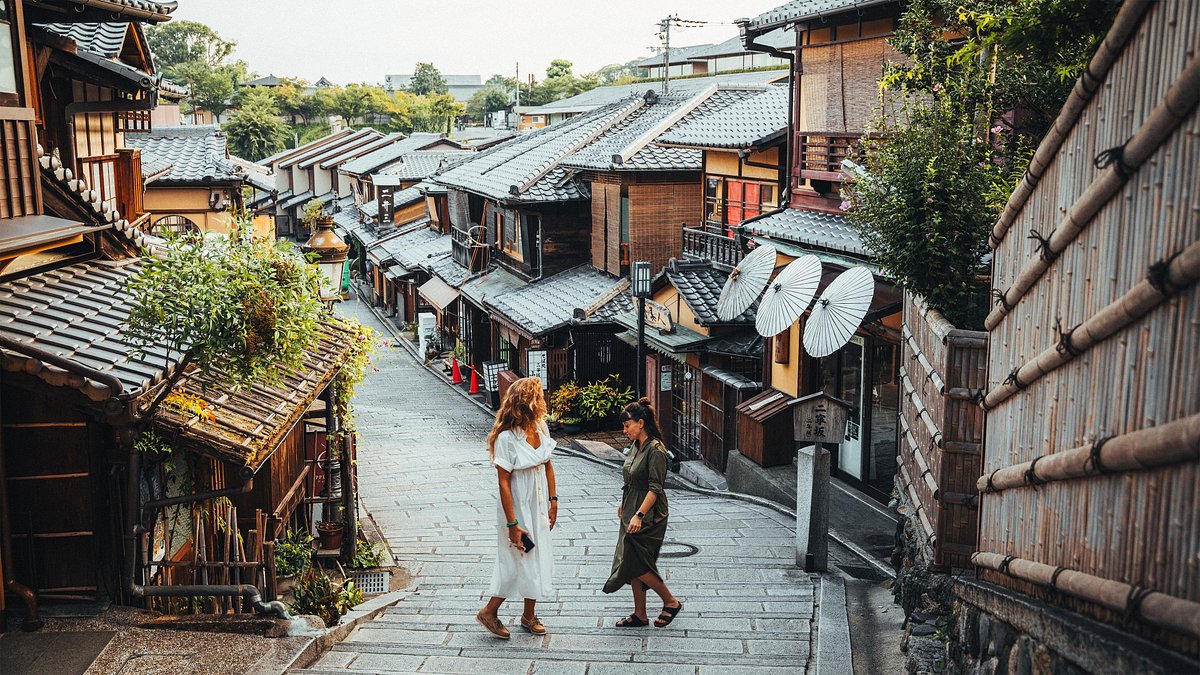
- Portuguese, Portugal
How to go from Nagoya to Kyoto ?
- Published on : 28/01/2017
- by : Japan Experience
- Add to favorites

Hikone, Shiga
©IMBiblio,https://www.flickr.com/photos/tags/flicker/,CC BY-SA 2.0,https://www.flickr.com/photos/33750036@N05/17282663250/
The second part of the journey from Tokyo to Kyoto with a Japan Rail Pass
On the second part of the journey from Tokyo to Kyoto, the JR Tokaido Shinkansen does not hang around and stops only a couple of times. Do not miss the stop at Maibara Station if you wish to visit the beautiful area of Lake Biwa.
Travel on the shinkansen T okaido
On the second part of the journey from Tokyo to Kyoto,the JR Tokaido shinkansen does not hang around and stops only a couple of times.
Do not miss the stop at Maibara Station if you wish to visit the beautiful area of Lake Biwa, Japan’s largest lake. Please note that Japan Rail Pass holders cannot take the Nozomi .

Discover Hikone
What to see .
Hikone Castle (Hikone-Jo) Hikone Castle is the oldest remaining medieval castle in Japan. It is one of four castles in Japan designated as National Treasures. Besides the castle’s main keep, most of the inner moats, guard houses and gates also remain intact. Hikone Castle is a 15-minute walk along the straight main road from Hikone Station. Open daily, 8:30 a.m. to 5 p.m., ¥600 including the garden. Genkyu-En Garden The garden lies at the foot of the castle.It dates from 1677 and was modeled on the villa of Emperor Genso, a ruler during China’s Tang Period. Hikone Castle Museum At the base of the castle hill stands the Hikone Castle Museum, whose main attraction is a partial reconstruction of the former palace buildings. The buildings, which include multiple tatami rooms, corridors and gardens, served as the government offices of the lords and were reconstructed in the 1980s.Ordinary exhibition rooms display the clan’s family treasures, including arms and armor, kimonos, musical instruments and documents. Open daily, 8:30 a.m. to 5 p.m., ¥500.
Where to Stay ?
Sunroute Hotel Hikone ホテルサンルート彦根 9-14 Asahimachi, Hikone, Shiga, 522-0073 Tel : 07-4926-0123 / www.sunroute.jp/english/hotelinfo/kinki/hikone/index.html Clean and spacious rooms a 1-minute walk from the west exit of Hikone Station. Tobaya Ryokan とばや旅館 3-1-23 Kawara, Hikone, Shiga, 522-0083 Tel : 07-4922-0325 / www.tobaya.jp A small ryokan with spacious roomsin an old, traditional house owned by a lovely family.
Where to eat ?
Hinai Jidori Hokkoriya 比内地鶏 ほっこりや Follow the road winding around the south-east end of the castle and cross the river. At the traffic light, continue straight on the right-hand side, crossing Nagahori Tozai-dori. The restaurant is on the righthand corner of the street after you pass the bus stop. Open daily, 11:30 a.m. to 2:30 p.m., 5:30 p.m. to 11 p.m. Closed Wednesdays. Tel 07-4921-3567/ http://ichien.jp/hokkoriya/ This restaurant is really well-known for its Oyako-don (chicken and egg on top of rice). Don’t worry - the line out the door moves really fast! Taneya たねや Taneya may only sell sweets, but it’s a must-see location just next to Hikone Castle. Cross the river on the south end of Hikone Castle and turn right onto Nagahori Tozai-dori. Taneya will soon be on your right, set back from the street a little. Open daily, 10 a.m. to 7 p.m. / https://taneya.jp/shop/shiga_mihori.html
Latest Articles
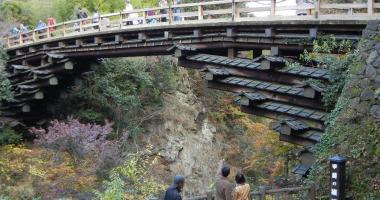
How to get from Tokyo to Otsuki
From the iconic Shinjuku Station, the JR Chuo Main Line has limited express train options for getting from the world's busiest train station out to the much more subdued and tranquil Otsuki in Yama
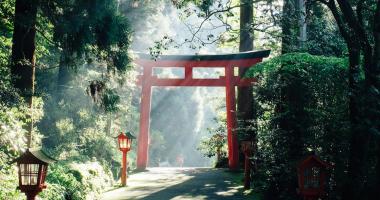
How to get from Osaka to Kanazawa
Travel from the biggest city in Kansai to the golden boutique city of Kanazawa using a combination of the Thunderbird Limited Express Train and the newly expanded Hokuriku Shinkansen bullet train!
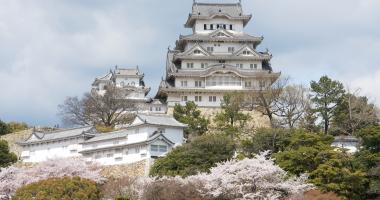
How to get from Kyoto to Himeji
Himeji in Hyogo Prefecture and Kyoto, the ancient capital of Japan, are considered two of the most culture-and-history-rich locations in the Kansai Region.
All the themes of the city
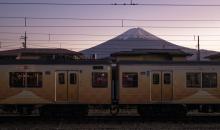
Unique Trains in Japan
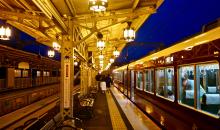
Japanese Stations
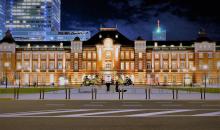
Getting Around Tokyo

Shinkansen Travel Tips
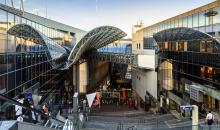
Getting Around Kyoto

Trains in Japan
Please select your country on the list below:
- Switzerland
- United Kingdom
- Other countries
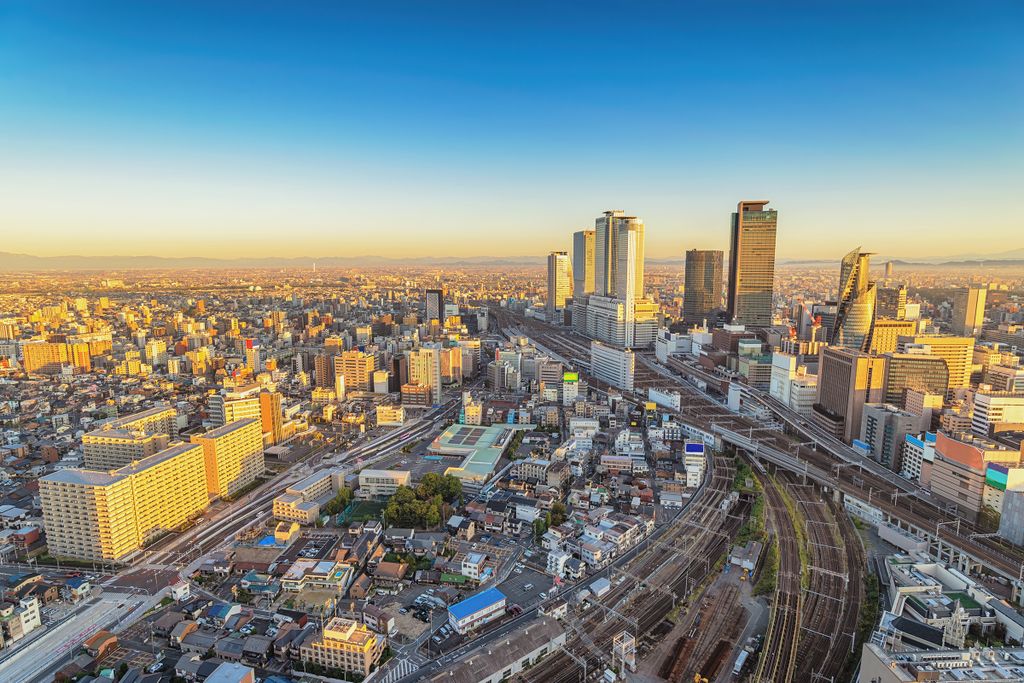
Kyoto to Nagoya
Best options, other options, kyoto to nagoya schedule, transportation from kyoto to nagoya.
- Trains RUB 3,328
- Buses RUB 1,136
- Ferries are not available
- Flights are not available
- Taxis are not available
- Vans are not available
Facts about the transport from Kyoto to Nagoya
Kyoto to nagoya destination reviews, popular routes.
- Kyoto → Tokyo
- Kyoto → Osaka
- Kyoto → Nara Cercle
- Kyoto → Hiroshima
- Kyoto → Hakone
- Tokyo → Kyoto
- Osaka → Kyoto
- Nagoya → Kyoto
- Hakone → Kyoto
- Hiroshima → Kyoto
From Nagoya
- Nagoya → Tokyo
- Nagoya → Osaka
- Nagoya → Takayama
- Nagoya → Hiroshima
- Tokyo → Nagoya
- Osaka → Nagoya
- Takayama → Nagoya
- Narita Airport → Nagoya
- Fukuoka → Nagoya
Popular Routes in Japan
- Tokyo → Osaka
- Osaka → Tokyo
How to get from Kyoto to Nagoya
When you want to get from Kyoto to Nagoya, you have a few options to consider. Traveling between these destinations is possible by different means of transport:
If you’re looking for a quick trip, it’s recommended that you use Train. However, if you’d rather take your time with a slower, more affordable travel option, you can book a Bus ticket.
The cost of travel will depend on the means of transport you choose for your trip. A Train ticket is the most expensive option - it will cost you about RUB 5,266 . If you want to save on transportation, it’s better to take a train as a train ticket costs as low as RUB 3,328 .
How far is Kyoto from Nagoya?
If you’re traveling by land, it’s important to know the distance from Kyoto to Nagoya. Your trip will be a total of 97 miles (155 km). The flying distance is 74 miles (118 km).
How long does it take to get from Kyoto to Nagoya?
The travel time from Kyoto to Nagoya can vary depending on the mode of transportation you choose. All things considered, the whole journey should take from 1 to 3 hours.
How much does it cost to get from Kyoto to Nagoya?
The cost of the trip from Kyoto to Nagoya varies according to what means of transport you choose for your journey. The most affordable operator is Shinkansen JR Central: travelling by train expect to pay as low as RUB 3,328 for your ticket.
However, if you’re after more upscale travel . The most expensive variant is to opt for a Train - a one-way Train ticket can cost as much as RUB 5,266 .
Here is a chart of the average ticket prices and transportation options available from Kyoto to Nagoya:
- Bus tickets - RUB 1,136 to RUB 1,209 ;
- Train tickets - RUB 3,328 to RUB 5,266 ;
How many trips per day are there between Kyoto and Nagoya?
Depending on your choice of transportation, the number of daily trips varies.
- Trains always run on a set schedule - there are 54 trains per day.
Which means of transport is the best for the route?
How to choose the most convenient way of travel from Kyoto to Nagoya? In order to make your choice of transportation easier, we asked 1000 users to range their preferences for this route. Here are the results of the poll:
- 58% decided to go for a bus.
- 42% users enjoyed a train ride.
- Transport Options

© Shiwei Chen
96 facts in comparison
Kyoto vs Nagoya
How does kyoto compare to nagoya.
- 3.3 °C higher average maximum temperature ? 21 °C vs 17.7 °C
- 74.35% lower population density ? 1776 people/km² vs 6923 people/km²
- 1.5 °C higher average temperature ? 16.8 °C vs 15.3 °C
- 24 more universities ? 37 vs 13
- Has mountains nearby ?
- Has lake/s ?
- Has a bike-sharing system ?
- 46 more museums ? 55 vs 9
How does Nagoya compare to Kyoto?
- 2.1% lower unemployment rate ? 3.2% vs 5.3%
- 8.94$ cheaper monthly public transport ticket ? 69.44$ vs 78.38$
- 0.85million more inhabitants ? 2.32 million vs 1.47 million
- 76.26$ cheaper rent for a one-bedroom apartment ? 695.64$ vs 771.90$
- 1 more big sports facilities (stadiums, arenas, etc.) ? 2 vs 1
- 1 more airports ? 1 vs 0
- 16 more embassies ? 26 vs 10
- 26 more public Wi-Fi spots ? 57 vs 31
Which are the most popular comparisons?

User reviews
Overall rating.
Walkability
Job opportunities
Public transport
Food and drink
2 years ago
Una ciudad preciosa con mucho que ofrecer
Fue la capital de Japón durante mucho tiempo y se nota porque rezuma historia. Quizá de las ciudades más bonitas de Japón, ya que combina perfectamente la tradición y la modernidad. Está muy bien conectada por tren y es fácil moverse en bicicleta, aunque es recomendable usar una bicicleta electrica ya que tiene bastantes cuestas. Tiene muchísimos templos muy bien conservados para visitar y la gastronomía es excelente y aun precio muy ajustado para ser Japón.
- Gastronomia
- Precio del alojamiento
Demographics
1.47 million
2.32 million
1776 people/km²
6923 people/km²
Unknown. Help us by suggesting a value. (Kyoto)
Unknown. Help us by suggesting a value. (Nagoya)
Quality of living
367$ billion
Environment
Transportation, general info, miscellaneous, which are the best cities.

Panama City

San Jose, CA, United States


IMAGES
VIDEO
COMMENTS
Things To Do In Kyoto Vs Nagoya. Kyoto: Kyoto holds a special place in Japan's history and culture, making it a captivating destination for those seeking a glimpse into the country's past. ... Taxis offer a convenient and comfortable way to travel, especially when visiting specific locations or when carrying heavy luggage. However, like in ...
In the winter, Nagoya often gets more sunshine than Kyoto. Nagoya gets 180 hours of sunny skies this time of year, while Kyoto receives 140 hours of full sun. Nagoya usually gets less rain in January than Kyoto. Nagoya gets 42 mm (1.7 in) of rain, while Kyoto receives 50 mm (2 in) of rain this time of the year.
Kyoto is about 130 km from Nagoya by road, which equates to a driving time of about two hours. On the other hand, the journey will take you about 35-40 minutes on the Nozomi Shinkansen, the fastest bullet train that currently exists. The Bottom Line. Is Nagoya worth visiting? The exuberance of my Nagoya travel guide stands in stark contrast to ...
Direct. 30-40 min. ¥ about 5,500. several trains per hour. Covered by: Japan Rail Pass. Nagoya and Kyoto are major stations on the JR Tokaido Shinkansen. Nozomi trains require about 35 minutes to reach Nagoya from Kyoto, while Hikari and Kodama trains take between 40 and 60 minutes. The regular one way fare from Kyoto to Nagoya is 5170 yen for ...
The Hikari takes 40 minutes to travel the route between Nagoya and Kyoto, while the Kodama trains take 51 minutes. (Often, the Kodama leaves at 45 minutes past the hour and arrives in Kyoto at 36 minutes past the following hour.) The Hikari and the Kodama costing ¥5,440. This is broken down into the basic fare of ¥2,520 and an express charge ...
Nagoya and Kyoto are major stations on the JR Tokaido Shinkansen. Nozomi trains require about 35 minutes to reach Nagoya from Kyoto, while Hikari and Kodama trains take between 40 and 60 minutes. The regular one way fare from Kyoto to Nagoya is 5170 yen for a non-reserved seat and around 6000 yen for a reserved seat.
View Map. Kyoto and Nagoya are just 82 miles (132 km apart), and train and bus connections are plentiful. Traveling by train is the fastest way to get from Kyoto to Nagoya; you can make the journey in less than an hour. Air travel, while possible, is not practical given the short distance between the cities. A visit to Nagoya would be a great ...
The Kyoto - Nagoya railway route provides some of the most impressive views in Japan, making a train ride a popular way to travel between the charming cities. But the beautiful sceneries are far from being the only reason to opt for traveling by railway. ... The Kyoto to Nagoya trains boast fast travel times and can cover the distance from city ...
There are many things to love about Nagoya - Kyoto trains, other than what they offer onboard, but they are famous for their exemplary punctuality and their extensive schedules. With up to 34 departures per day, a Nagoya - Kyoto train ride can be one of the most convenient ways to travel between the two cities' centers.
The Kyoto-Nagoya railway route offers some of the most impressive views in Japan, making train travel between the two cities a popular choice. It is not just the beautiful scenery that inspires people to travel by railway. ... Q&A: Travel From Kyoto to Nagoya. HOW FAR IS KYOTO FROM NAGOYA BY TRAIN? Kyoto and Nagoya are 134 kilometres or 83 ...
How to get to Nagoya . Nagoya is well-connected with trains, buses and airports. Tokyo, Osaka, Kyoto, Fukuoka and Kanazawa operate Shinkansen (bullet trains) that take as little as 36 minutes to Nagoya Station, with JR lines also an option. Buses depart from the same cities (except Fukuoka) and take between two to five hours to reach Nagoya ...
Apart from great onboard amenities, the Nagoya - Kyoto trains are famous for their exemplary punctuality and broad schedule, offering up to 34 daily departures and making a train ride one of the most convenient ways to travel between the city centers of Nagoya and Kyoto. ... Sure! As the distance between the two cities is only 134 km (83 mi ...
Drive • 1h 28m. Drive from Nagoya to Kyoto 130.5 km. ¥2100 - ¥3200. Quickest way to get there Cheapest option Distance between.
Travel from Kyoto to Kansai International Airport: 78 minutes. Kyoto to Itami International Airport (the other Osaka airport): roughly 60 minutes. Kyoto to Chubu International Airport (Nagoya's new airport): 82 minutes. Kyoto to Nagoya Airport (the old airport): 80 minutes. So there really is not much difference, time-wise, between Kansai ...
Japan Railways Shinkansen operates a train from Nagoya Station to Kyōto hourly. Tickets cost ¥4400 - ¥6500 and the journey takes 35 min. Alternatively, Meitetsu Bus operates a bus from Nagoya Station Shinkansen Exit to Kyoto Chuo Entrance 3 times a day. Tickets cost ¥2600 and the journey takes 2h 32m. Train operators.
Please note that Japan Rail Pass holders cannot take the Nozomi. 0 KM - Nagoya. 30 KM - 0H10 -Gifu-Hashima station. the shinkansen. 79 KM - 0H25 - Maibara station. Otsu and Hikone, and the city of Gifu. Hikone Station Otsu. to reach Gifu147 KM - 0H36 - Kyoto. Biwa, Shiga ©boom sirada, unsplash.
The only downside is the weather in Kyoto is absolutely horrid. Upwards of 35+degrees in the Summer and is one of the most humid cities in Japan and in the Winter gets quite cold as well (down to -10). In Kyoto you can easily avoid the tourist areas if you try. 3. colofire.
Getting to Kanazawa is convenient due to its high accessibility from Tokyo, Osaka, Kyoto, and Nagoya via train. With the JR Takayama-Hokuriku Area Pass, you can catch a direct bus from Takayama and Shirakawa-go, or the Limited Express Thunderbird train from Osaka and Kyoto. The Hokuriku Shinkansen between Kanazawa and Toyama, and the Limited ...
Japan Railways Shinkansen operates a train from Kyōto to Nagoya Station every 30 minutes. Tickets cost ¥4400 - ¥6500 and the journey takes 38 min. Alternatively, Meitetsu Bus operates a bus from Kyoto Chuo Entrance to Nagoya Station Shinkansen Exit 3 times a day. Tickets cost ¥2600 and the journey takes 2h 29m.
However, if you're after more upscale travel . The most expensive variant is to opt for a Train - a one-way Train ticket can cost as much as USD 54.29. Here is a chart of the average ticket prices and transportation options available from Kyoto to Nagoya: Bus tickets - USD 13.90 to USD 15.61; Train tickets - USD 35.18 to USD 54.29;
Japan Railways Shinkansen operates a train from Nagoya Station to Kyōto hourly. Tickets cost ¥4400 - ¥6500 and the journey takes 35 min. Alternatively, Meitetsu Bus operates a bus from Nagoya Station Shinkansen Exit to Kyoto Chuo Entrance 3 times a day. Tickets cost ¥2600 and the journey takes 2h 32m. Train operators.
Source: World Tourism Organization, 2024. is a capital city. Kyoto. Nagoya. National capital status indicates that a city is of great importance for political and diplomatic matters. Source: Wikipedia, 2024. has a stock exchange. Kyoto. Nagoya.